Creating a Japanese dining room transforms your space into a serene sanctuary that embodies centuries of design wisdom. These dining spaces emphasize minimalism, natural materials, and harmony with nature, creating environments that nourish both body and soul. Japanese dining room design principles focus on functionality, seasonal beauty, and the art of mindful living. Whether you prefer traditional elements or modern interpretations, these ideas will help you cultivate a peaceful dining experience that reflects authentic Japanese aesthetics and promotes tranquil family gatherings.
1. Traditional Tatami Mat Japanese Dining Room
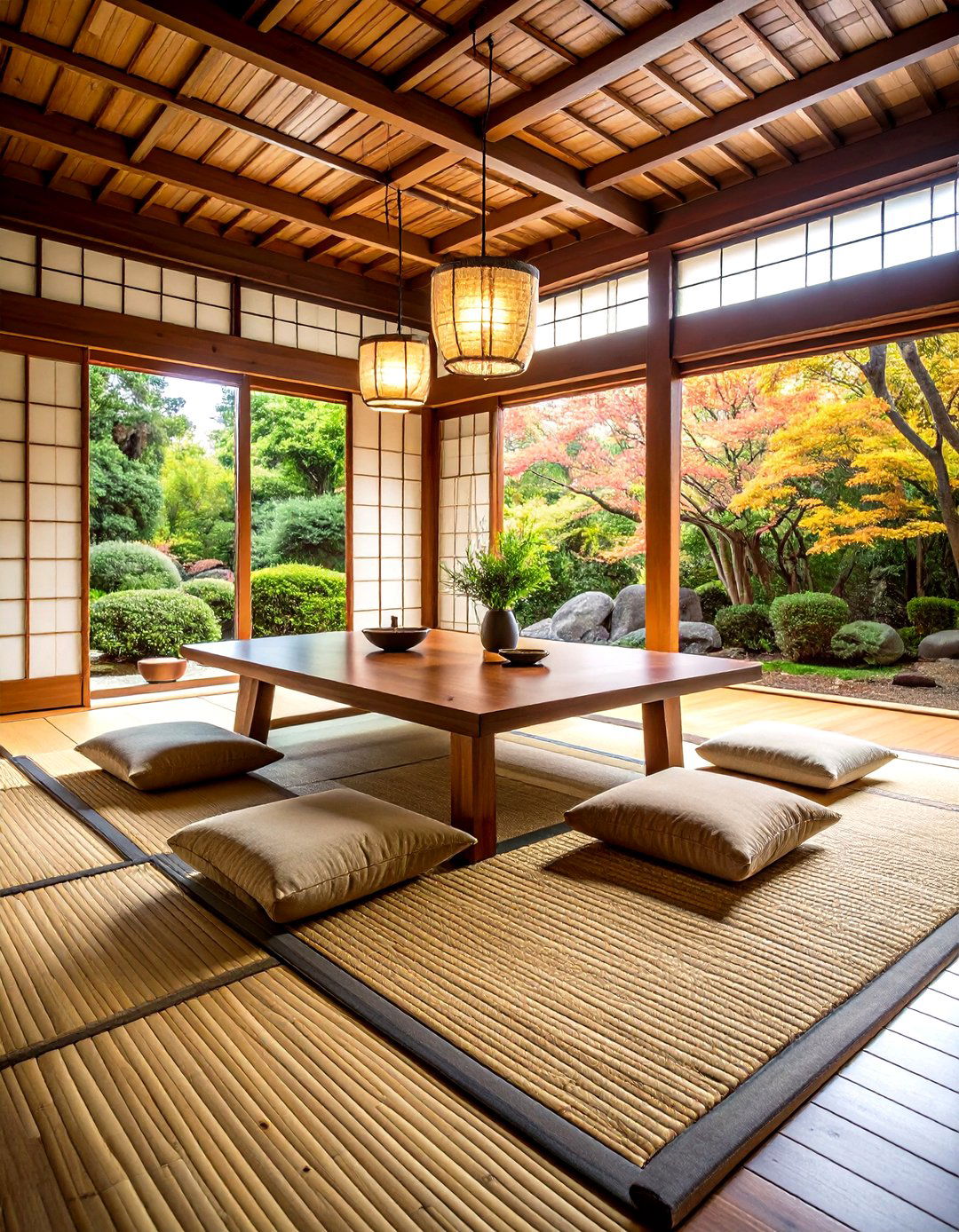
Transform your dining space with authentic tatami mats, the cornerstone of traditional Japanese interior design. These woven straw mats, made from rice straw cores covered with igusa grass, create natural flooring that defines the dining area while adding earthy texture and subtle fragrance. Tatami mats measure approximately 1.8 by 0.9 meters and should be arranged in auspicious patterns to promote good fortune. This flooring encourages floor seating with zabuton cushions, creating an intimate dining experience where family members gather at eye level, fostering equality and connection during meals.
2. Chabudai Low Table Japanese Dining Room
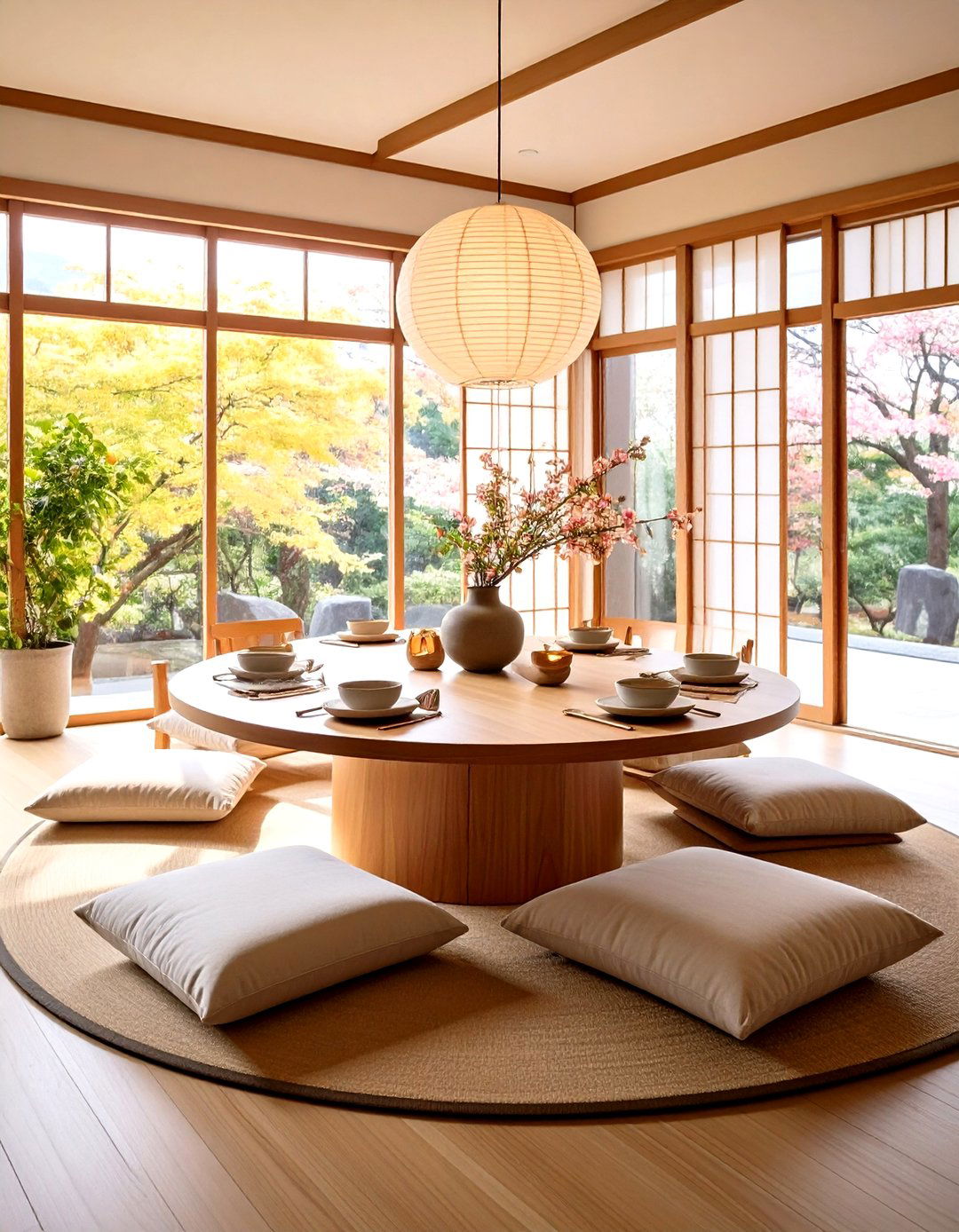
Center your Japanese dining room around a chabudai, the traditional low table that has anchored Japanese family meals since the early 1900s. These tables typically stand 15-30 centimeters high with collapsible legs for easy storage, crafted from high-quality wood like cherry or oak. The chabudai's circular or rectangular design encourages communal dining where shared dishes are placed centrally, promoting family bonding and conversation. Surround the table with zabuton floor cushions or zaisu backrest chairs, creating a comfortable seating arrangement that maintains the authentic low-profile aesthetic essential to Japanese dining culture.
3. Kotatsu Heated Table Japanese Dining Room
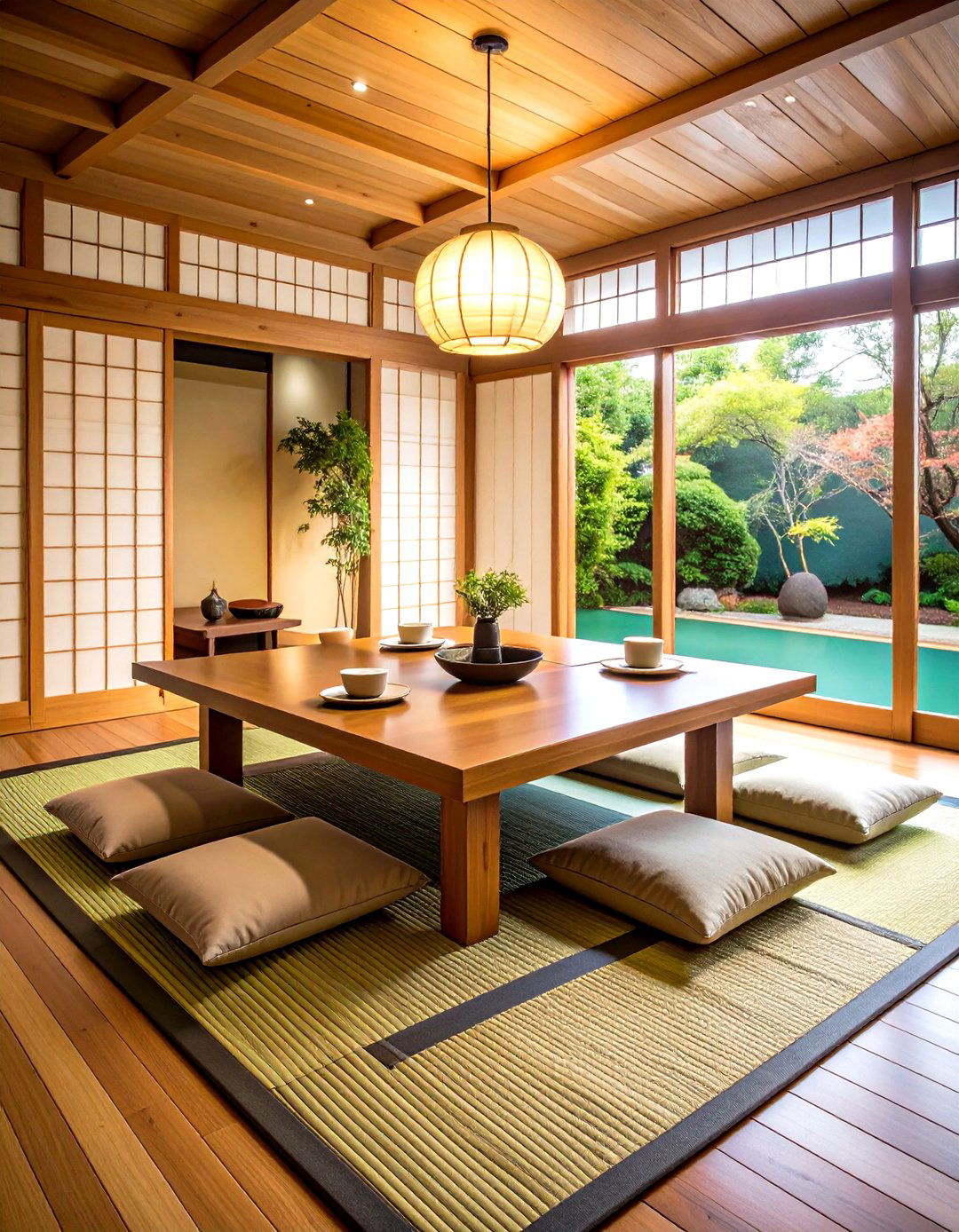
Embrace the warmth and comfort of a kotatsu table, Japan's ingenious solution for winter dining that combines furniture with heating elements. This traditional table features a wooden frame topped with a removable surface, with a heating element underneath and a futon blanket that drapes over the frame to trap warmth. Modern kotatsu tables accommodate American electrical systems and can double as coffee tables during warmer months. The cozy enclosure created by the heated table and blanket transforms dining into a gathering experience where family members can comfortably share meals while staying warm during cold seasons.
4. Shoji Screen Room Divider Japanese Dining Room
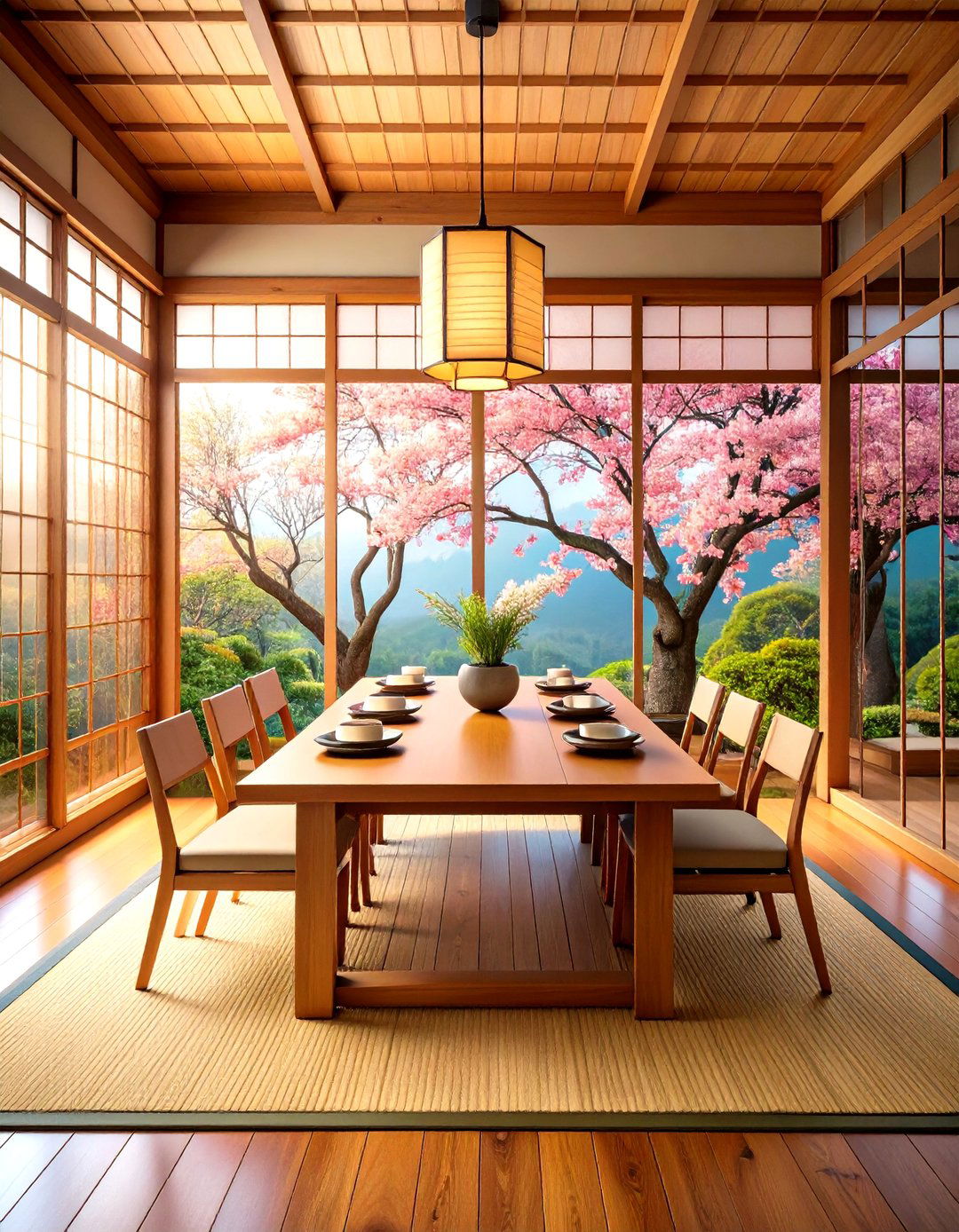
Incorporate elegant shoji screens to create flexible dining spaces that embody Japanese architectural principles of adaptability and light diffusion. These translucent panels, constructed from wooden lattice frames covered with rice paper or modern alternatives, slide effortlessly to open or partition your dining area. Shoji screens filter natural light beautifully while maintaining privacy, creating soft, ambient illumination that enhances the dining atmosphere. Their lightweight construction allows for easy reconfiguration, enabling you to expand your dining space for larger gatherings or create intimate settings for smaller meals while preserving the room's connection to adjacent spaces.
5. Fusuma Sliding Door Japanese Dining Room
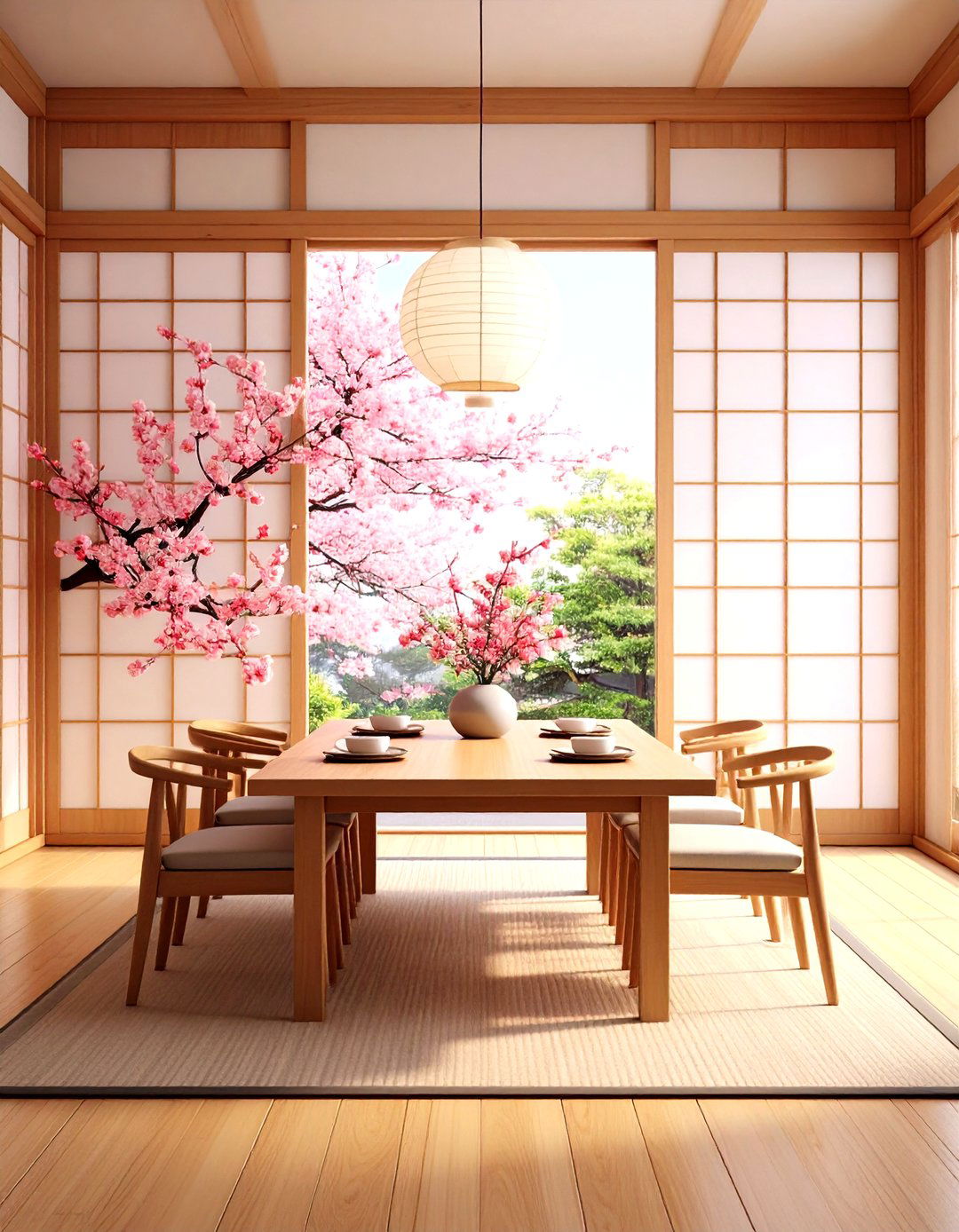
Install fusuma sliding doors to achieve authentic Japanese room flexibility while concealing storage and creating sophisticated spatial divisions. These opaque panels, traditionally covered in decorative paper or fabric, measure approximately 90 by 180 centimeters and slide horizontally on wooden tracks. Fusuma doors can separate your dining room from adjacent spaces or conceal built-in storage, maintaining the minimalist aesthetic essential to Japanese design. Choose panels with traditional motifs like cherry blossoms, geometric patterns, or nature scenes to add artistic elements while ensuring the dining space remains uncluttered and functionally adaptable to various occasions and group sizes.
6. Tokonoma Display Alcove Japanese Dining Room

Create a focal point with a tokonoma alcove, the raised display space that serves as the spiritual and aesthetic center of traditional Japanese rooms. This recessed area, typically one tatami mat in size, showcases seasonal art such as hanging scrolls (kakemono), ikebana flower arrangements, or ceramic pieces. Position the tokonoma opposite the dining room entrance to draw guests' attention while following proper etiquette by seating honored guests with their backs to the display. Change the displayed items seasonally to maintain visual interest and reflect the Japanese appreciation for nature's cycles, creating a meditation point that elevates everyday dining into mindful experiences.
7. Minimalist Zen Japanese Dining Room
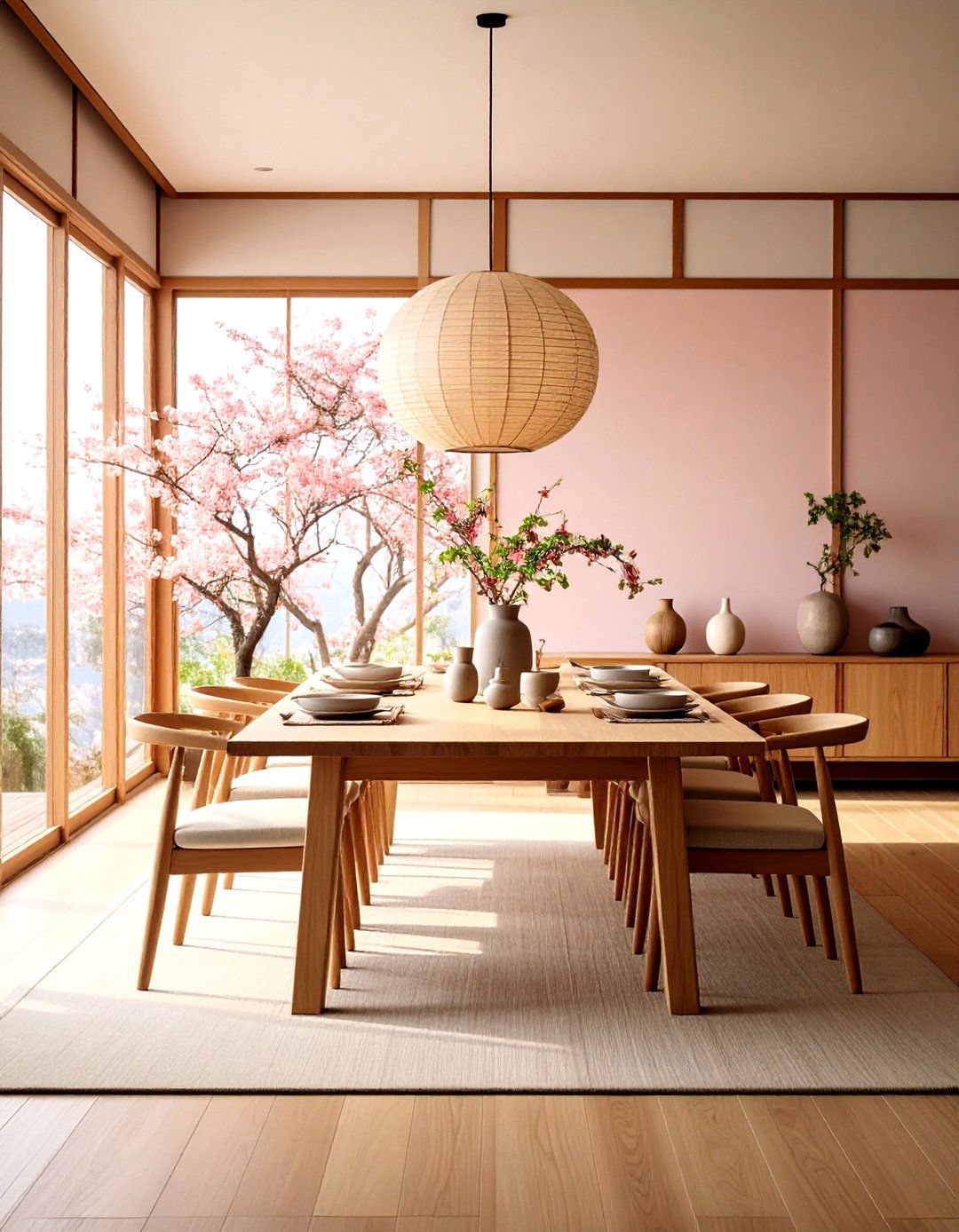
Design a minimalist zen dining space that eliminates visual clutter while maximizing tranquility through carefully curated elements and intentional emptiness. Focus on clean geometric lines, natural materials, and functional beauty where every item serves a specific purpose. Choose furniture with simple forms, neutral colors, and high-quality craftsmanship that reflects Japanese appreciation for understated elegance. Maintain clear surfaces and hidden storage to preserve the serene atmosphere, allowing diners to focus on the meal and conversation without distractions. This approach creates a meditative environment where the absence of excess becomes a positive design element that promotes mindfulness and inner peace.
8. Natural Bamboo Material Japanese Dining Room
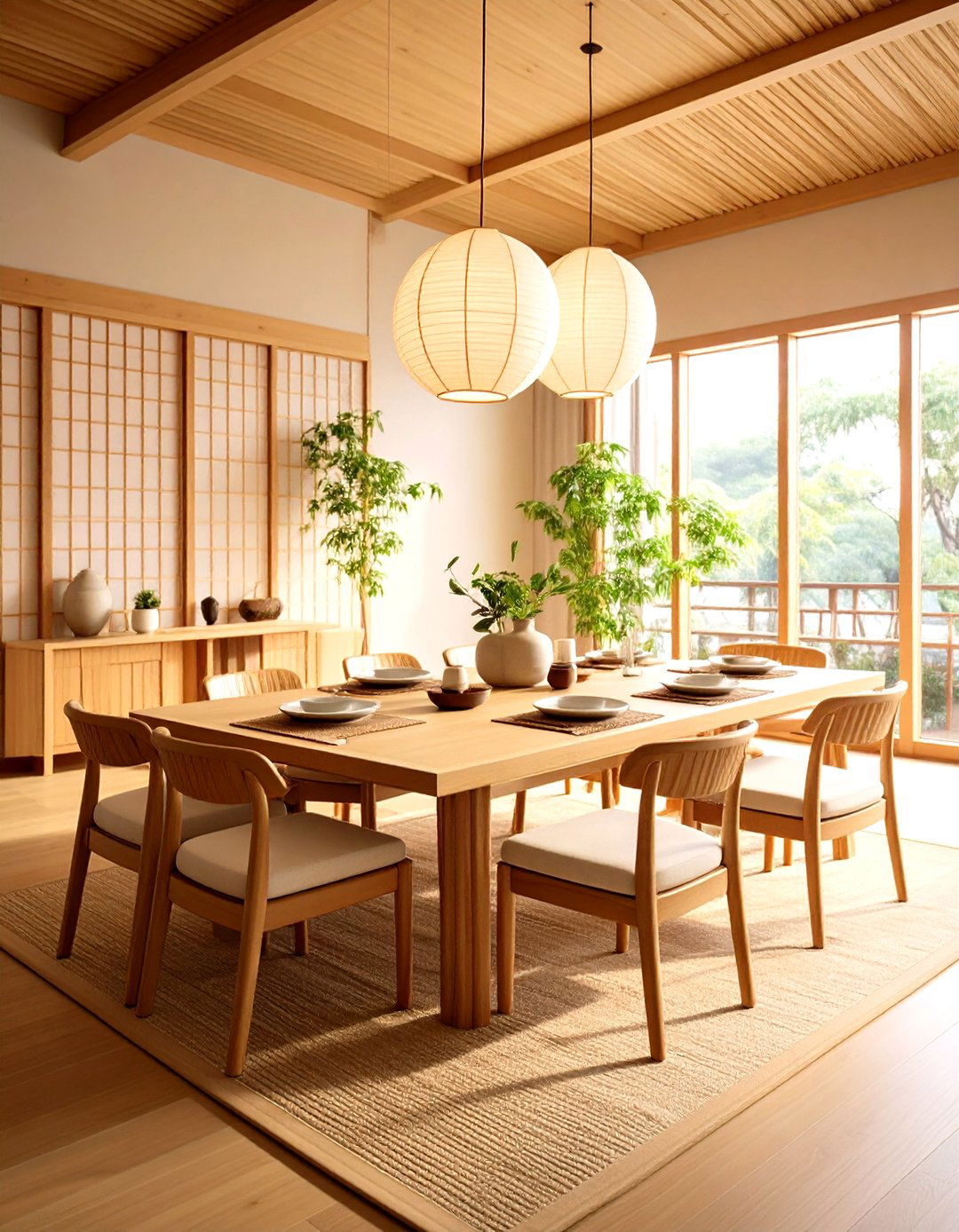
Incorporate sustainable bamboo elements throughout your dining space to achieve authentic Japanese aesthetics while supporting environmental consciousness. Use bamboo for flooring, furniture, placemats, lighting fixtures, and decorative screens, taking advantage of this versatile material's lightweight durability and natural beauty. Bamboo's rapid growth and renewable properties align with Japanese values of harmony with nature. Choose pieces that showcase bamboo's natural grain and color variations, from light honey tones to deeper amber hues. The material's organic texture adds visual warmth while maintaining the clean lines essential to Japanese design, creating a dining environment that feels both sophisticated and connected to nature.
9. Floor Cushion Seating Japanese Dining Room
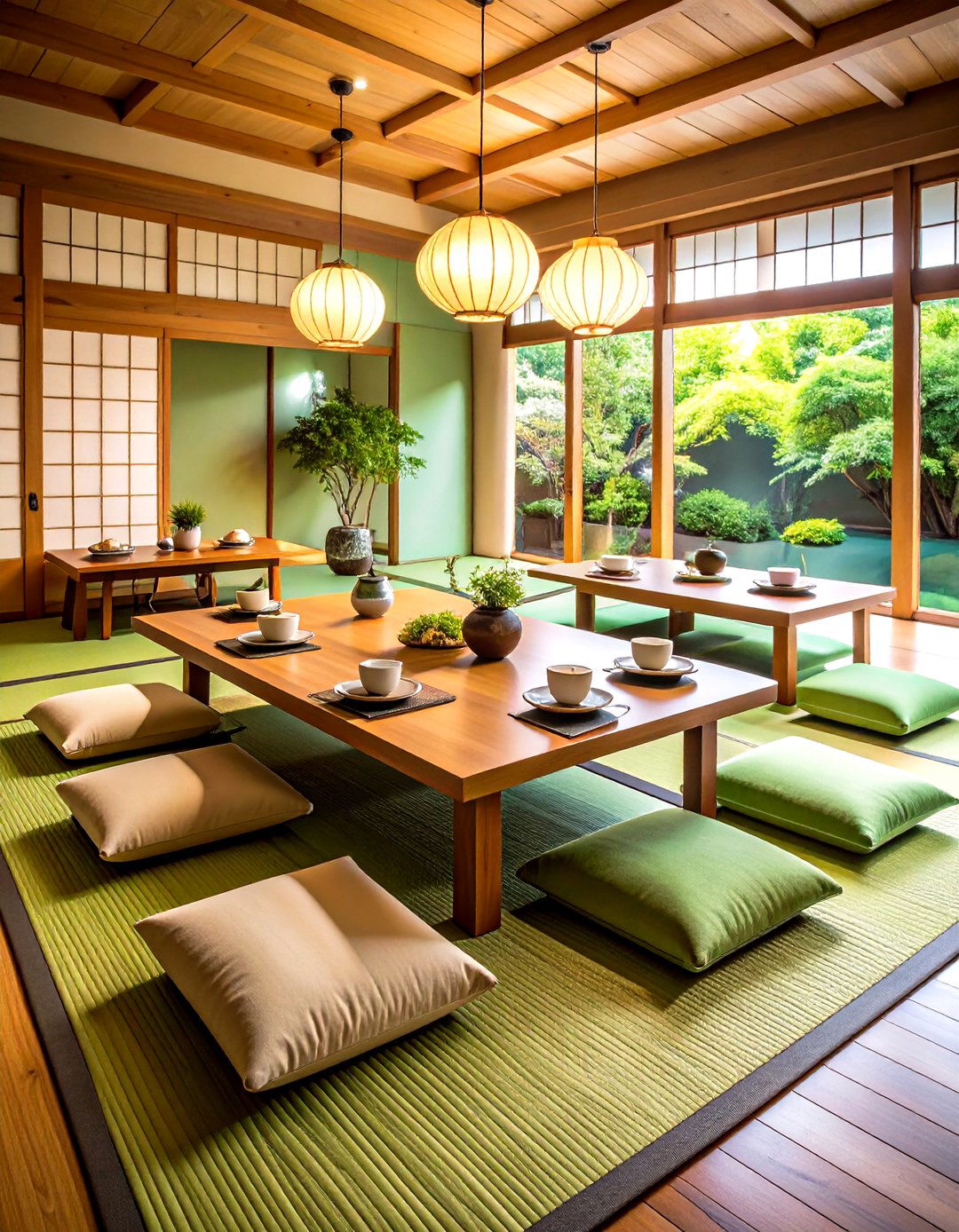
Establish authentic floor seating arrangements using zabuton cushions and zaisu chairs that encourage proper posture while maintaining traditional Japanese dining customs. These thick, square cushions, typically filled with buckwheat hulls or cotton, provide comfortable floor seating that can be easily stored when not in use. Zaisu chairs offer back support while maintaining the low profile essential to Japanese dining. Arrange seating around your low table to accommodate 4-6 people comfortably, ensuring adequate space for proper sitting positions. This traditional seating style promotes better digestion, encourages mindful eating, and creates an intimate atmosphere where all diners share the same eye level for enhanced communication.
10. Neutral Color Palette Japanese Dining Room
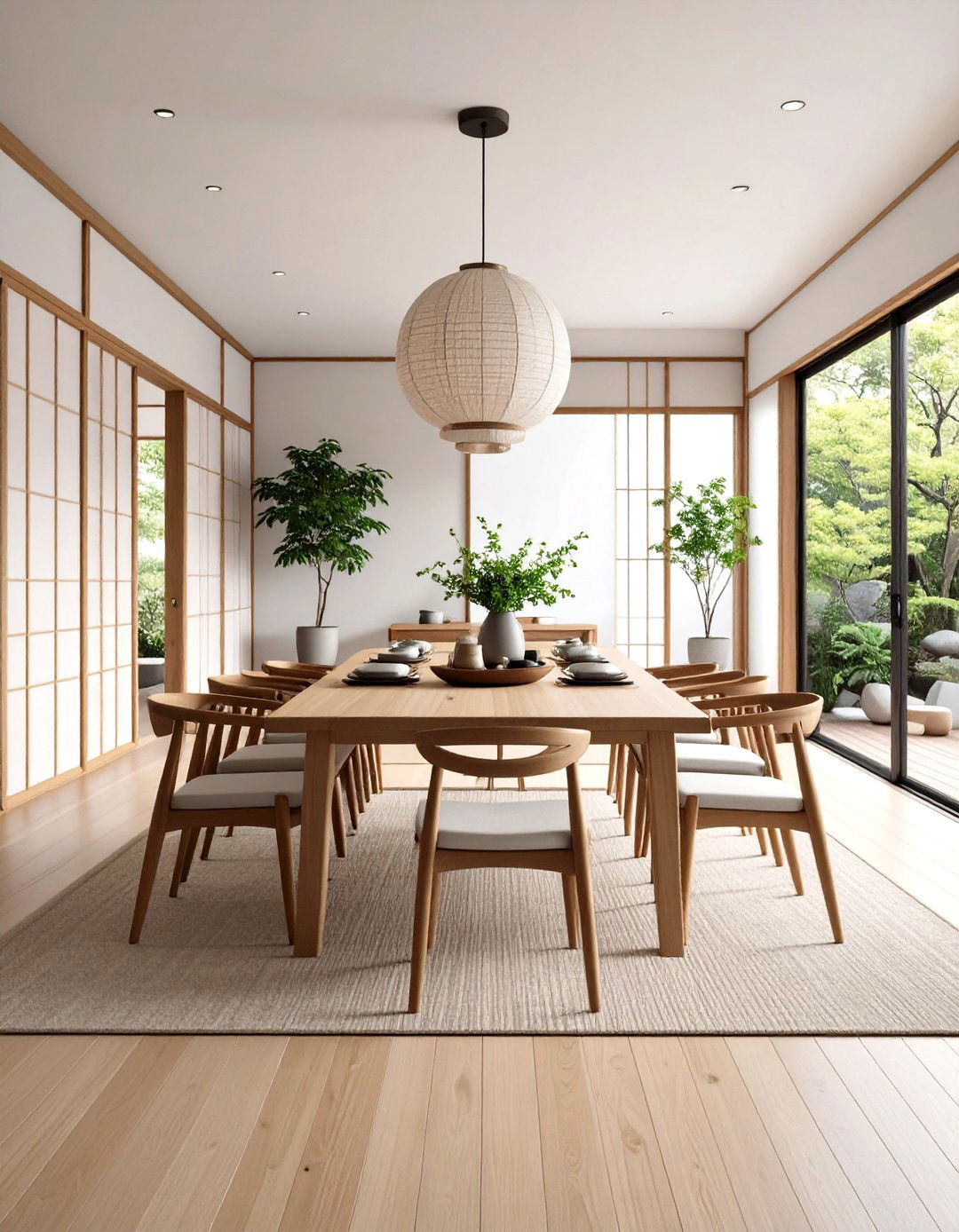
Develop a sophisticated neutral color scheme using soft whites, warm beiges, muted grays, and earthy browns that create a calming foundation for your Japanese dining space. These colors reflect natural light beautifully while promoting relaxation and mindfulness during meals. Incorporate subtle variations within the neutral range through different textures and materials rather than bold color contrasts. Add gentle touches of natural green through plants or seasonal elements, and use black sparingly for definition and grounding. This restrained palette allows the natural beauty of wood grains, stone textures, and woven materials to become the primary visual interest while maintaining the serene atmosphere essential to Japanese dining philosophy.
11. Hidden Storage Japanese Dining Room
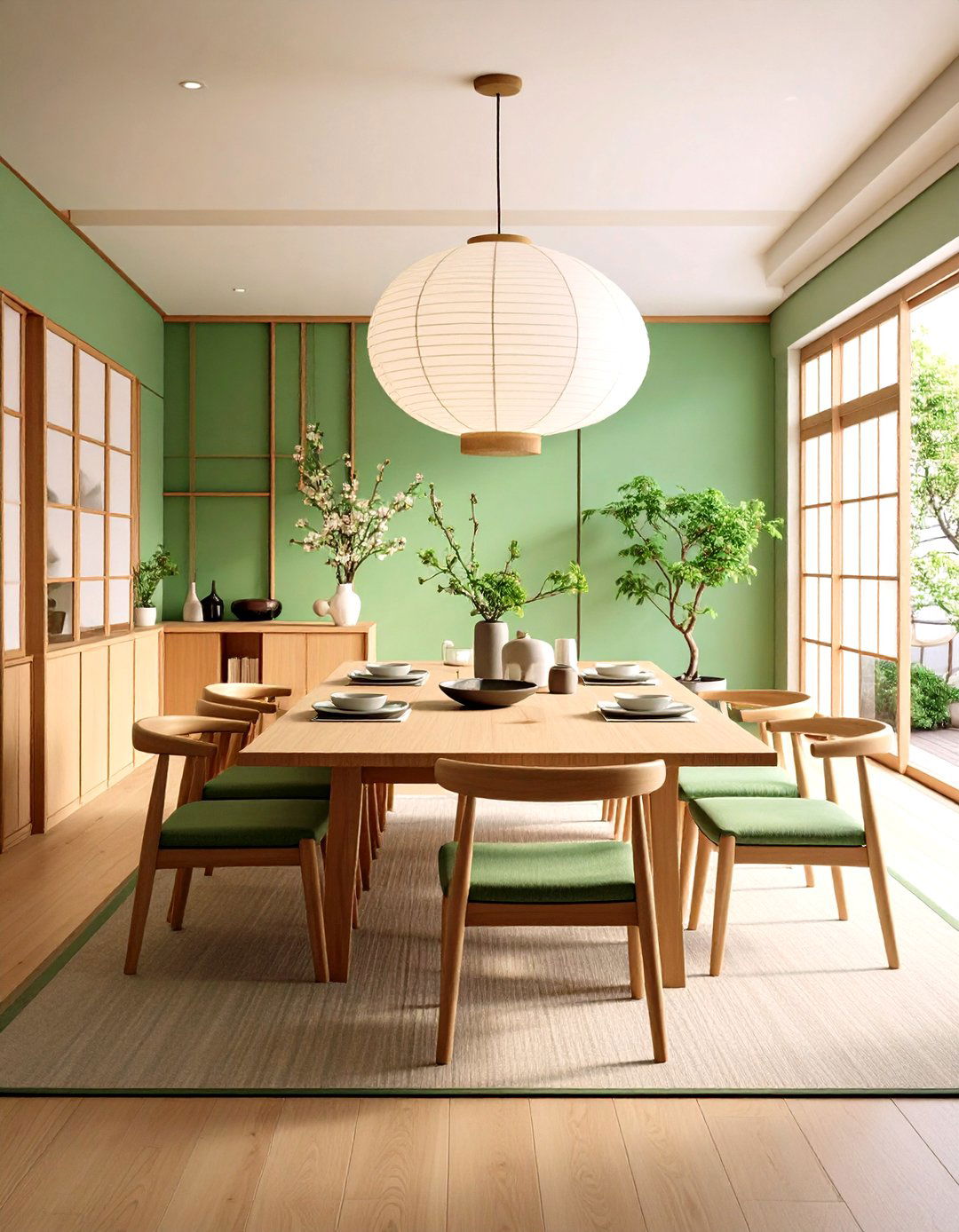
Implement ingenious hidden storage solutions that maintain the clean, uncluttered aesthetic fundamental to Japanese design while ensuring dining essentials remain easily accessible. Design built-in cabinets behind sliding panels, under-floor storage beneath tatami mats, or concealed compartments within furniture pieces. Use techniques like oshiire closets with sliding doors to store dining linens, dishes, and seasonal items. Install pull-out drawers in low platforms or benches that double as seating. These storage solutions preserve the minimalist visual environment while providing practical organization that supports the Japanese principle of having a designated place for everything, enabling quick transitions between formal and casual dining configurations.
12. Natural Lighting Japanese Dining Room
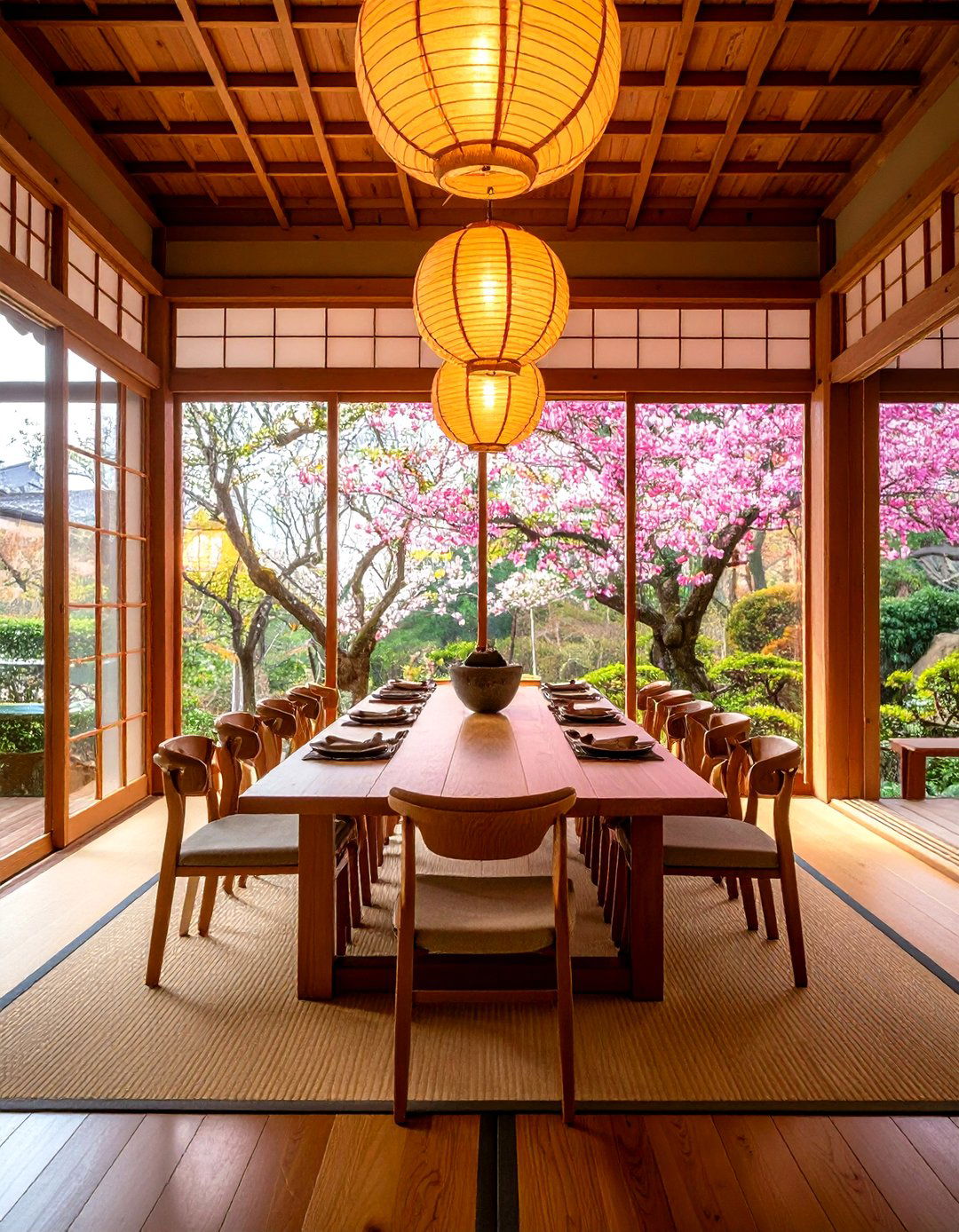
Maximize natural light through thoughtful window treatments and architectural elements that create soft, diffused illumination perfect for Japanese dining aesthetics. Replace heavy curtains with translucent materials like linen or rice paper panels that filter harsh sunlight while maintaining privacy. Position mirrors strategically to reflect natural light deeper into the space without creating glare. Install clerestory windows or skylights when possible to bring additional light from above. During evening hours, supplement with warm-toned lighting from paper lanterns, floor lamps, or recessed fixtures that create gentle pools of light rather than harsh overhead illumination, supporting the tranquil atmosphere essential for mindful dining experiences.
13. Indoor Zen Garden Japanese Dining Room
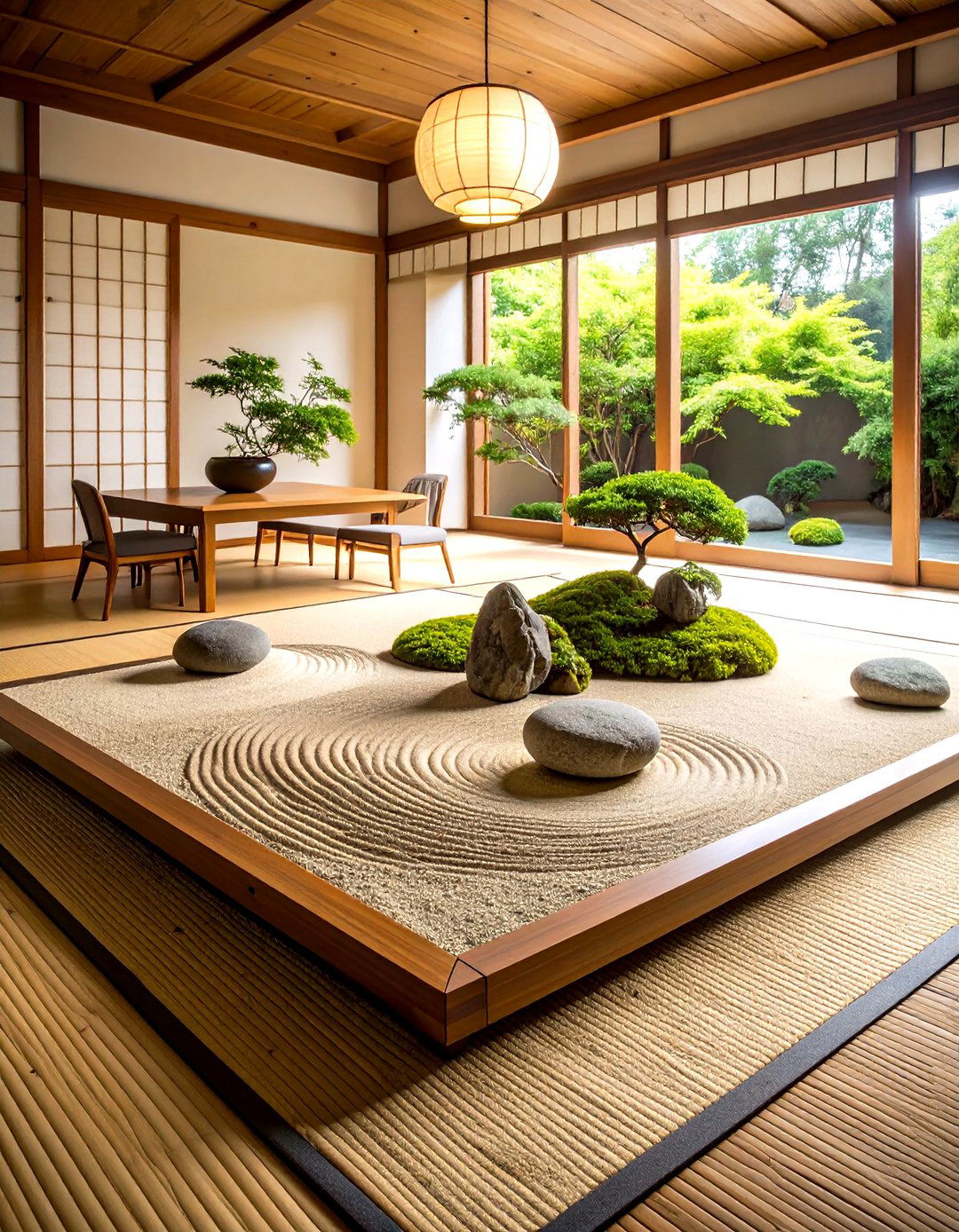
Introduce a miniature zen garden as a living centerpiece that brings meditative elements directly into your dining space while connecting diners with nature's tranquility. Create a small arrangement using a shallow wooden tray filled with fine sand, carefully placed stones, and minimal plantings like moss or small succulents. The raked sand patterns can be changed regularly, providing a focal point for contemplation and seasonal variation. Position the zen garden on a low side table or dedicated platform where it can be appreciated without interfering with dining activities. This element adds visual interest while reinforcing the Japanese principle of finding beauty in simplicity and impermanence.
14. Mixed Texture Japanese Dining Room
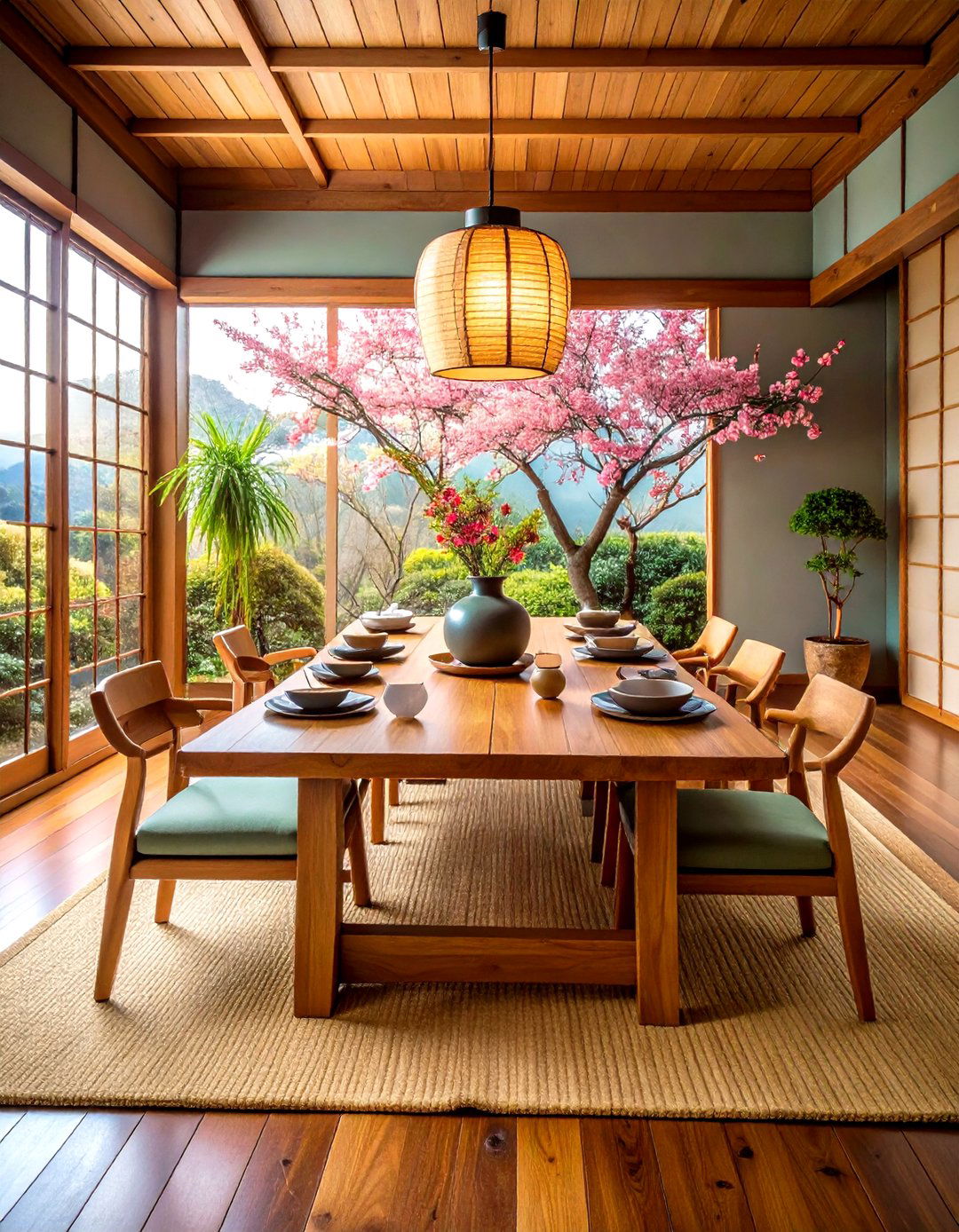
Layer various natural textures throughout your dining space to create depth and visual interest while maintaining the harmonious balance central to Japanese design. Combine smooth wooden surfaces with rough-hewn stone elements, soft woven fabrics with polished ceramics, and matte finishes with subtle sheens. Use materials like river rocks, hemp rope, raw silk, and unfinished wood to create tactile contrasts that engage the senses without overwhelming the space. Balance these textures carefully, ensuring each element complements rather than competes with others. This approach adds richness to the minimalist aesthetic while honoring the Japanese appreciation for natural materials and their inherent beauty through careful juxtaposition and thoughtful arrangement.
15. Seasonal Display Japanese Dining Room
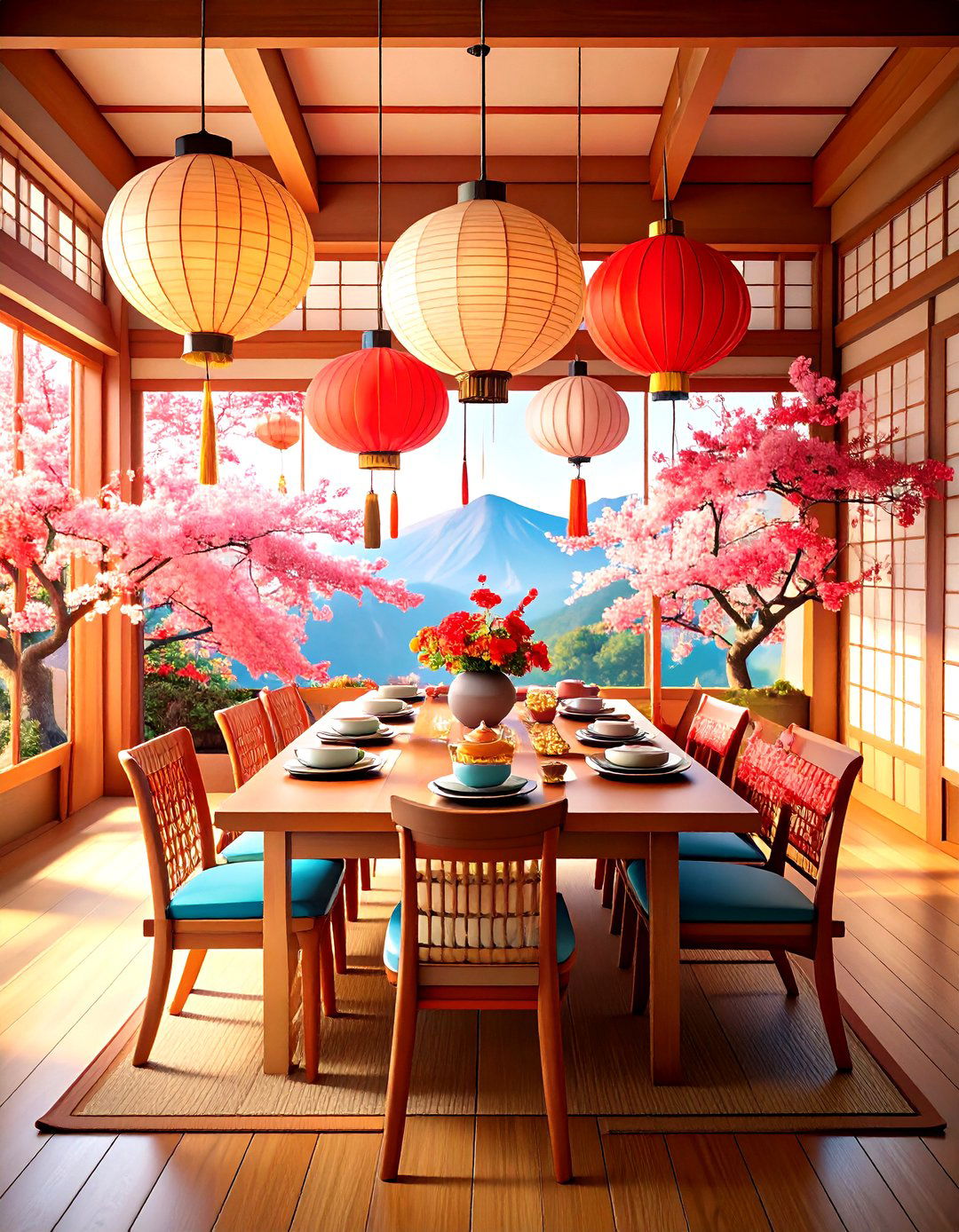
Establish a rotating display system that celebrates seasonal changes through carefully chosen artifacts, artwork, and natural elements that reflect Japan's deep connection to nature's cycles. Change hanging scrolls, flower arrangements, and decorative objects quarterly to represent spring cherry blossoms, summer greenery, autumn leaves, and winter snow. Use seasonal tableware, placemats, and centerpieces that correspond to natural rhythms and traditional Japanese celebrations. This practice keeps the dining space fresh and engaging while honoring the cultural importance of seasonal awareness in Japanese life. Store seasonal items in hidden compartments, rotating displays to create anticipation and maintain visual interest throughout the year while deepening appreciation for nature's beauty and impermanence.
16. Open Concept Japanese Dining Room
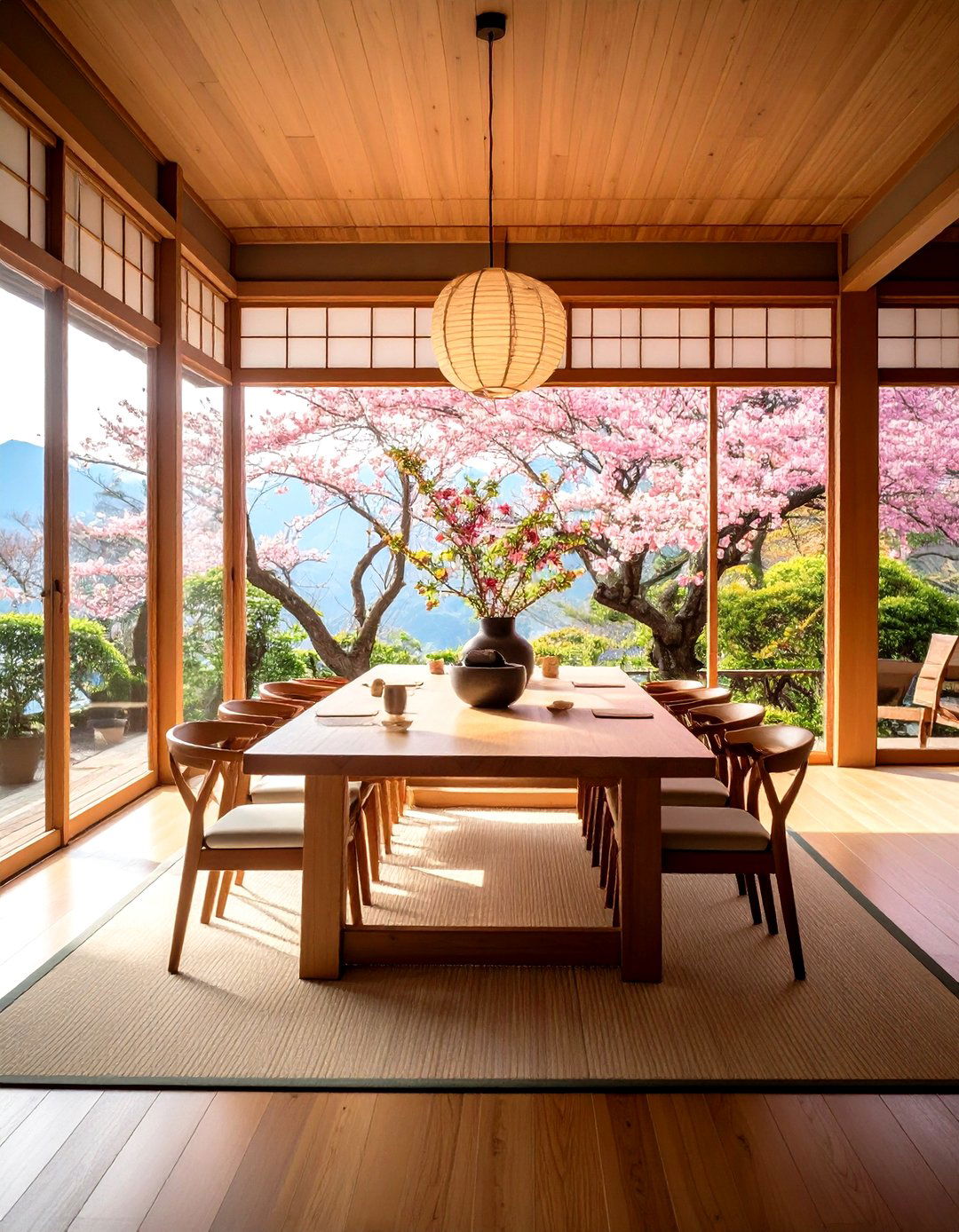
Create flowing, interconnected spaces that exemplify Japanese architectural principles of flexibility and spatial harmony while maintaining distinct functional areas. Remove unnecessary walls or install sliding panels that can open the dining area to adjacent living spaces or kitchen areas. Use consistent flooring materials and color palettes to create visual continuity while employing subtle level changes or furniture placement to define the dining zone. This approach maximizes the sense of spaciousness even in smaller homes while enabling easy entertaining and family interaction. Maintain clear sight lines to outdoor gardens or natural views when possible, reinforcing the Japanese emphasis on connecting interior and exterior environments.
17. Multi-functional Japanese Dining Room

Design a versatile space that transforms easily from dining area to work space, tea ceremony room, or meditation area through strategic furniture choices and flexible arrangements. Choose lightweight, multi-purpose pieces like folding tables, stackable cushions, and modular storage that can be reconfigured quickly. Install tracks for sliding panels that can alter the room's function and size as needed. This adaptability reflects traditional Japanese living where rooms served multiple purposes throughout the day. Maintain organization systems that support quick transitions while ensuring each configuration feels intentional and complete. This flexibility maximizes space efficiency while honoring the Japanese principle of living with less while achieving more functionality through thoughtful design.
18. Traditional Tea Ceremony Japanese Dining Room

Dedicate space for the revered practice of chanoyu (tea ceremony) by incorporating specific elements like a dedicated preparation area, proper seating arrangements, and ceremonial implements. Install a tokonoma alcove for displaying tea-related artwork, include a mizuya (preparation area) with running water if possible, and provide appropriate storage for tea implements. Use traditional materials like tatami flooring, shoji screens, and natural wood surfaces that create the proper atmosphere for this mindful practice. Consider the proper dimensions for tea ceremony movements and ensure adequate clearance for traditional procedures. This specialized area can double as a regular dining space while maintaining its capacity to host authentic tea ceremonies when desired.
19. Contemporary Japandi Japanese Dining Room
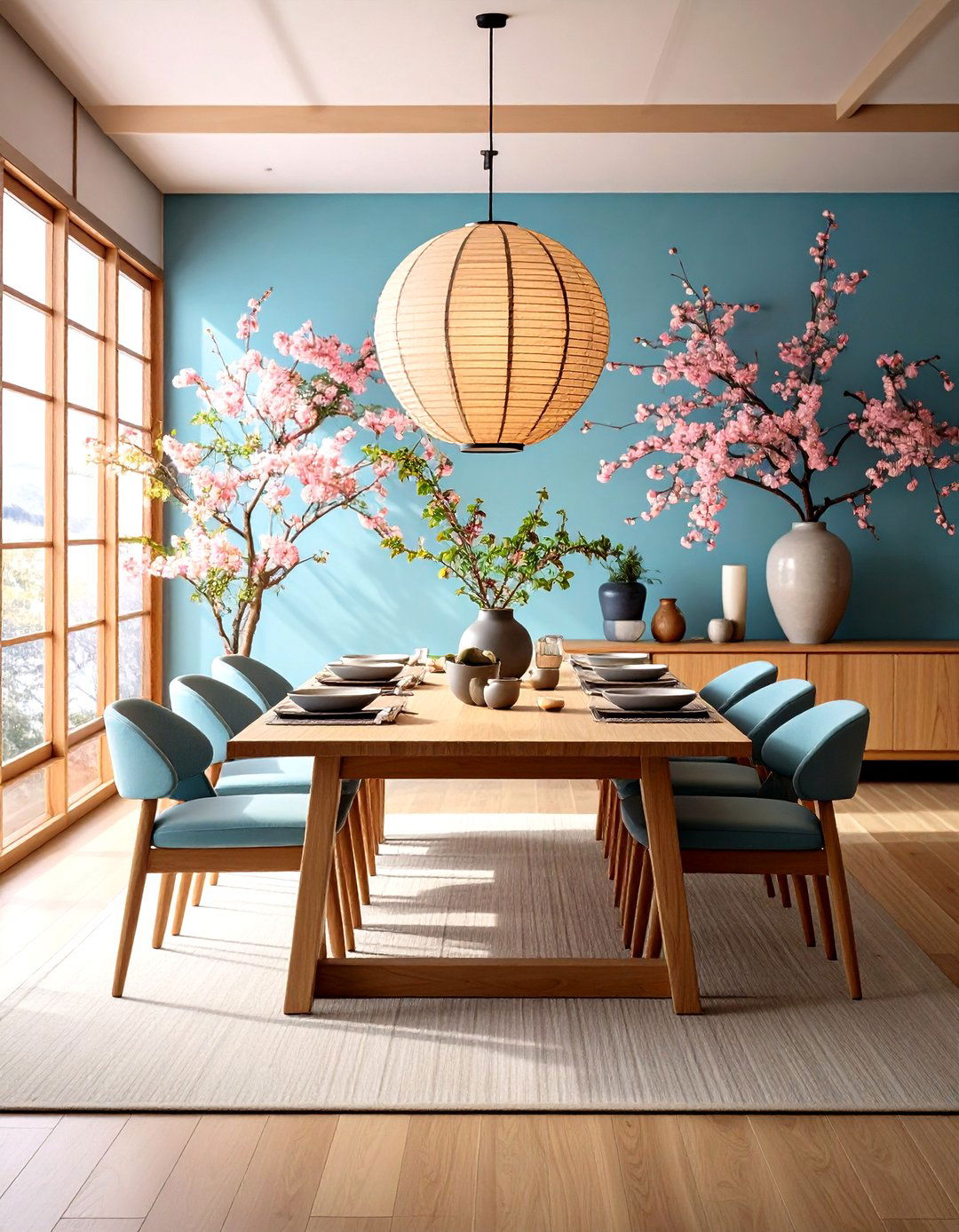
Blend Japanese minimalism with Scandinavian functionality to create a modern Japandi dining space that combines Eastern philosophy with Western comfort needs. Incorporate clean-lined furniture with blonde wood finishes, neutral textiles in natural fibers, and contemporary lighting that provides both function and atmosphere. Use hygge-inspired elements like cozy throws and candles alongside Japanese principles of simplicity and natural materials. This fusion approach accommodates modern lifestyles while maintaining the peaceful, uncluttered aesthetic central to Japanese design. Choose pieces that serve multiple functions and emphasize craftsmanship quality over quantity, creating a dining environment that feels both contemporary and timeless while supporting mindful living practices.
20. Nature-Inspired Japanese Dining Room
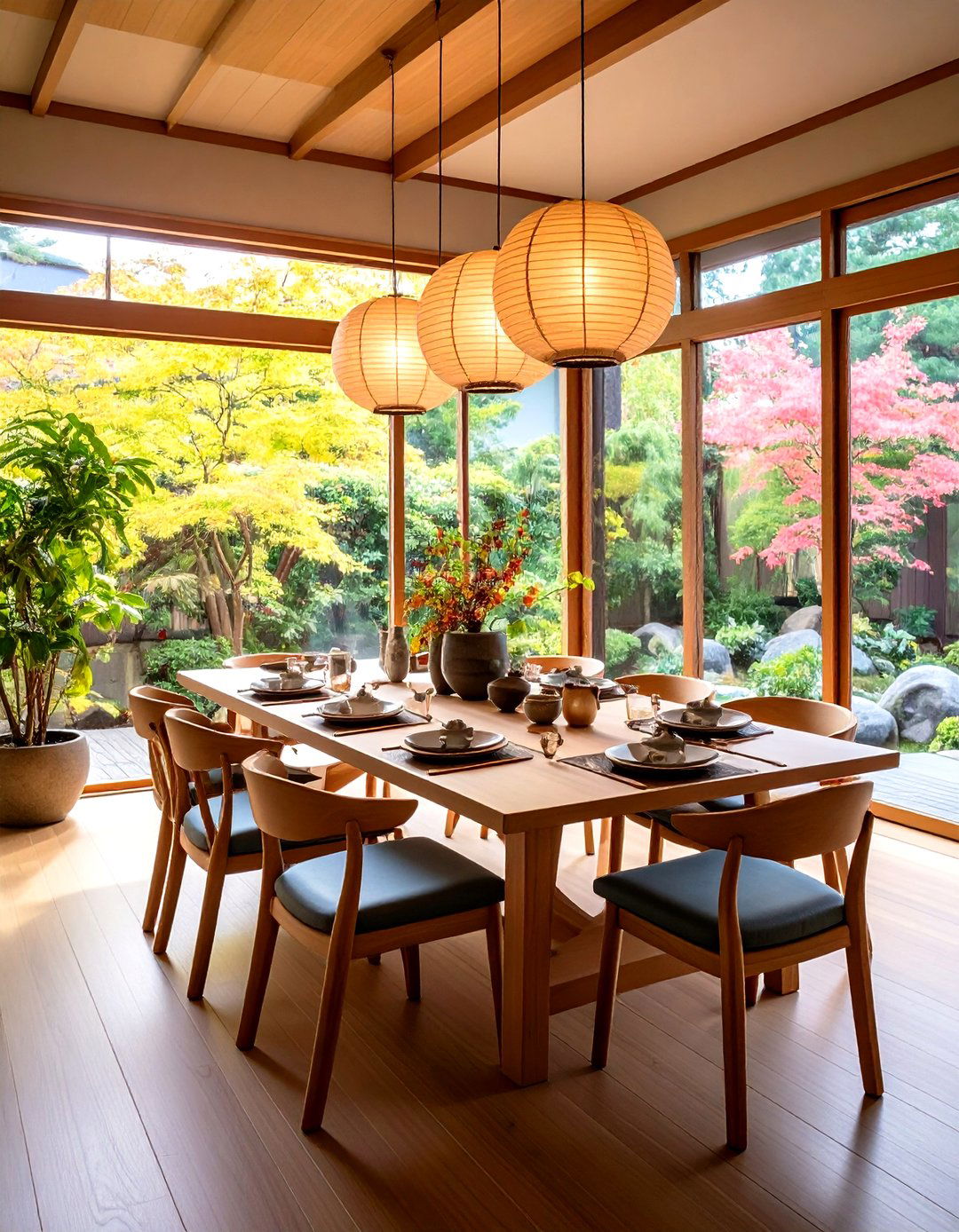
Establish a strong connection to the natural world through careful selection of organic materials, nature-themed artwork, and living elements that bring the outdoors inside. Incorporate views of gardens or natural landscapes through strategically placed windows, use stone and wood in their natural states, and include live plants that purify air while adding life to the space. Display nature-inspired artwork such as botanical prints, landscape photography, or traditional ink paintings depicting natural scenes. Choose dining accessories like bamboo placemats, stone serving pieces, and wooden utensils that reinforce the connection to earth's elements. This approach creates a dining environment that celebrates the Japanese belief in harmony between human habitation and the natural world.
Conclusion:
These 20 Japanese dining room ideas offer pathways to creating spaces that nourish both body and spirit through timeless design principles. From traditional tatami floors and tokonoma alcoves to contemporary Japandi fusion styles, each approach emphasizes simplicity, natural materials, and mindful living. By incorporating elements like low tables, hidden storage, and seasonal displays, you can transform your dining area into a tranquil retreat that promotes meaningful connections and peaceful meals for years to come.


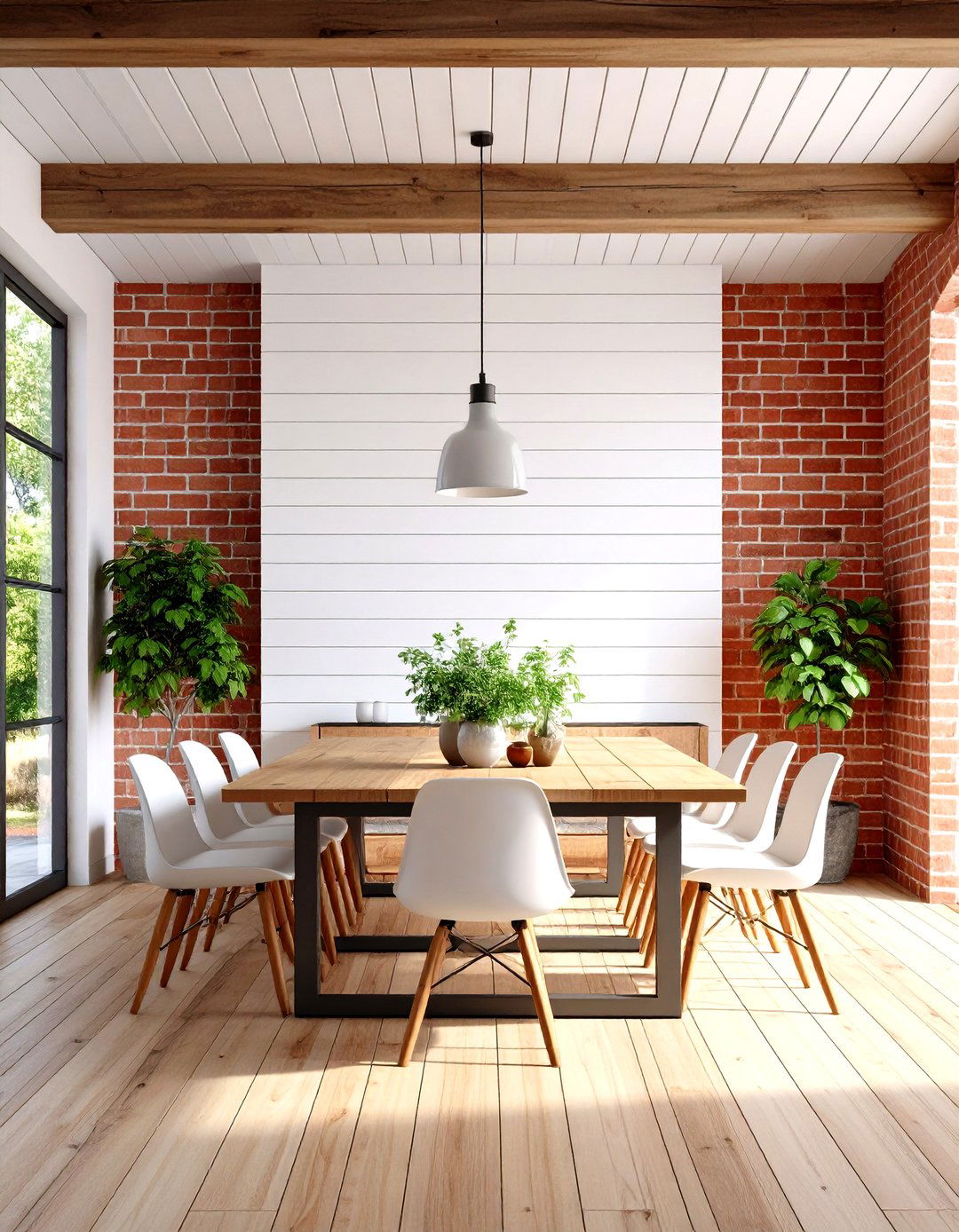

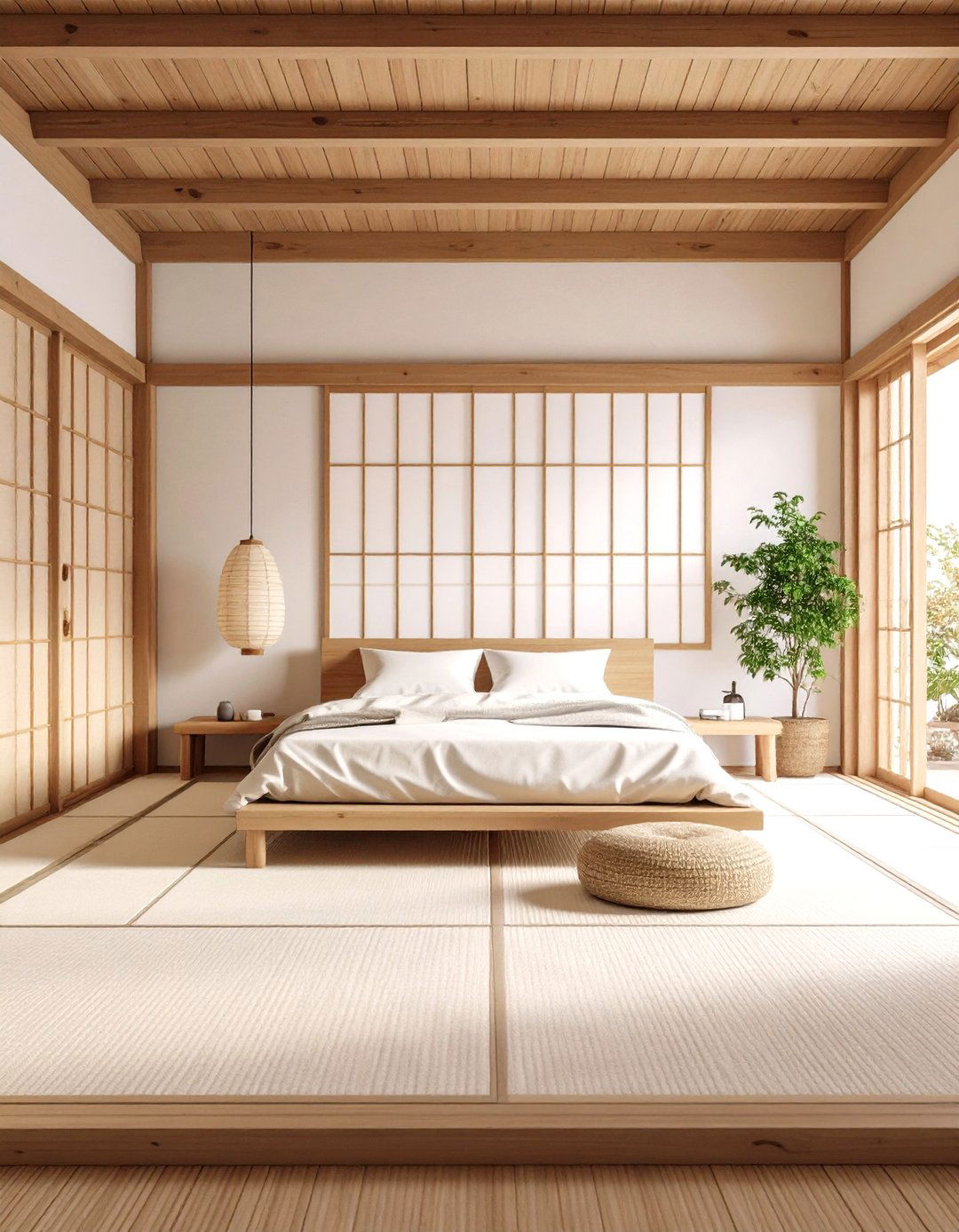
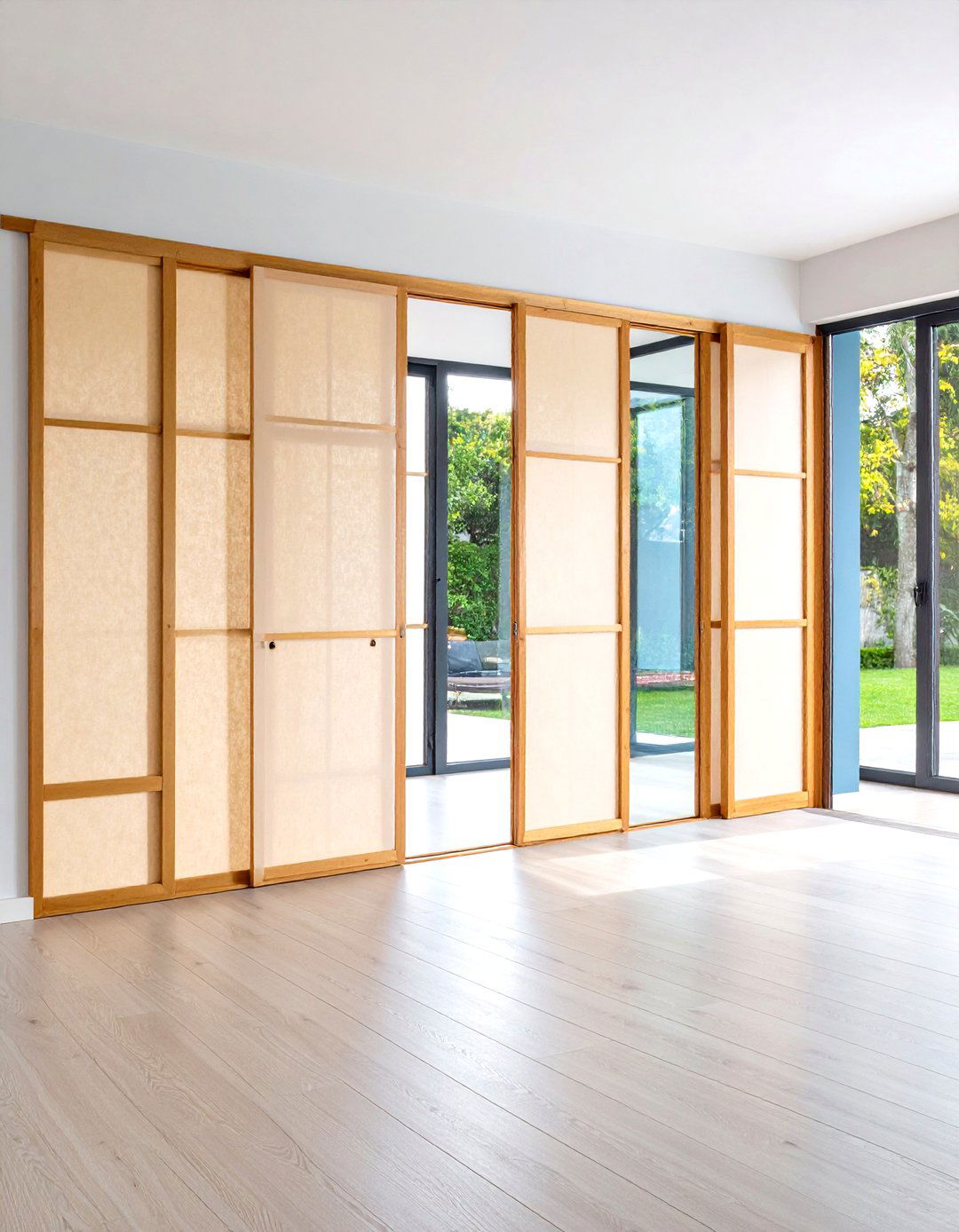

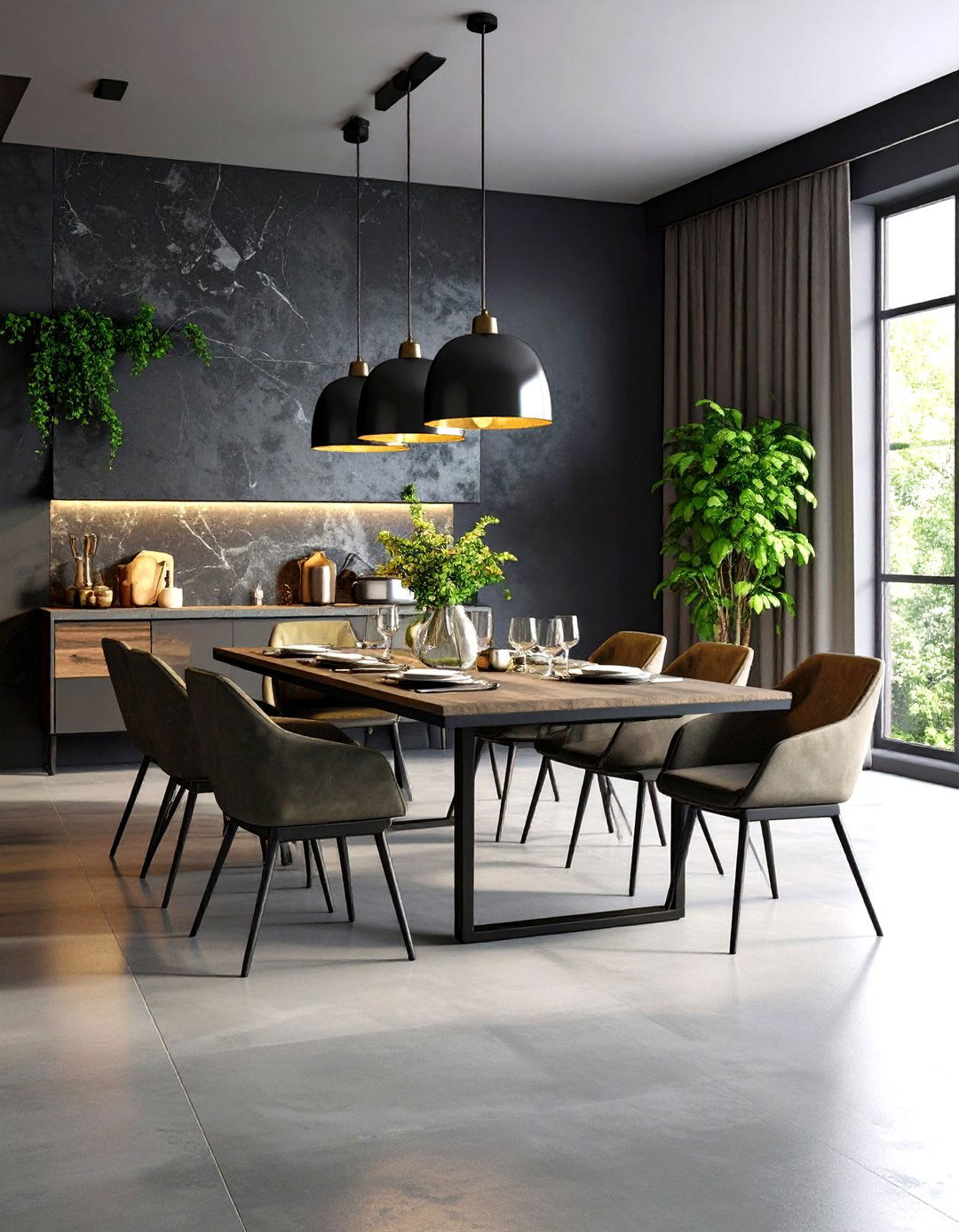

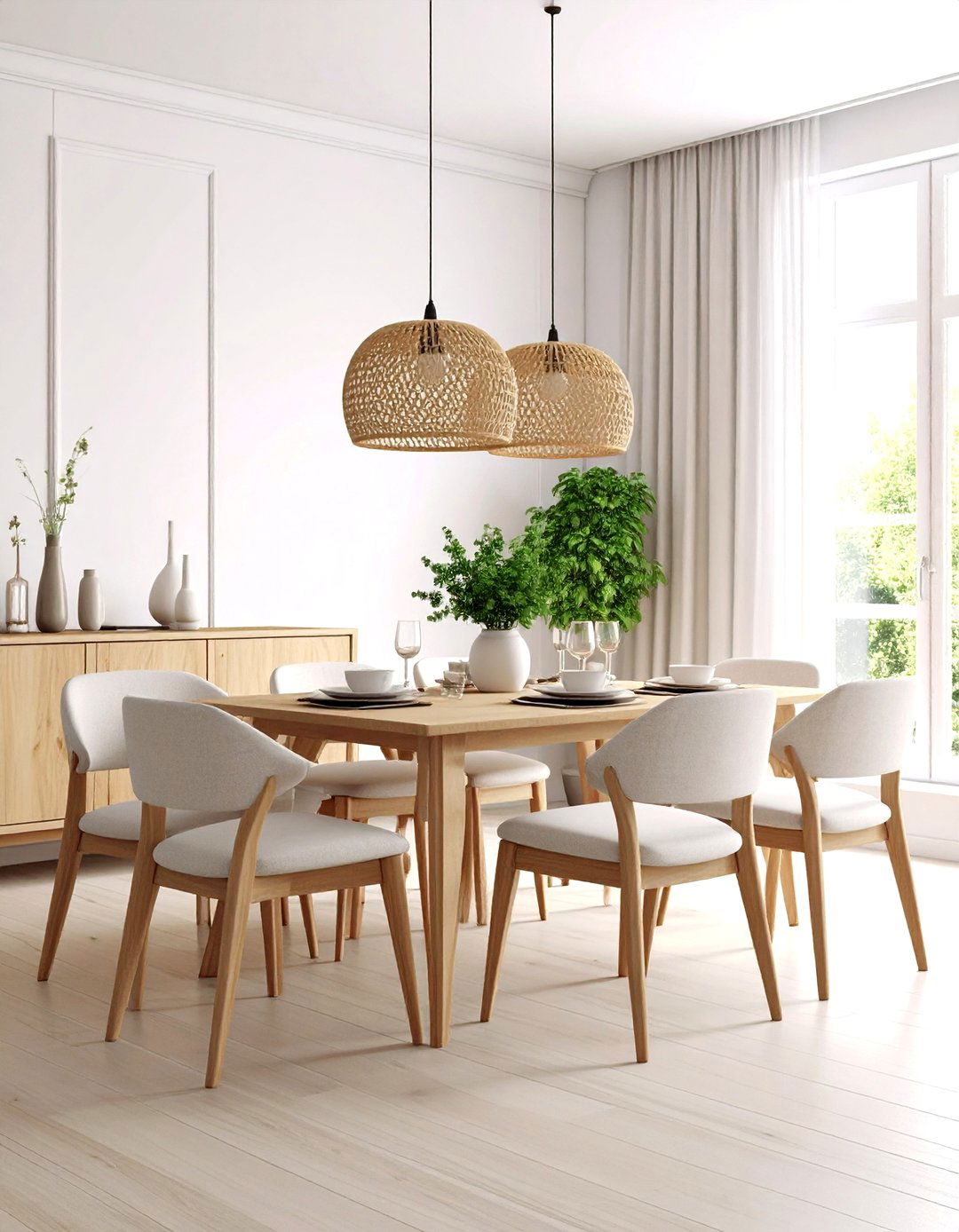
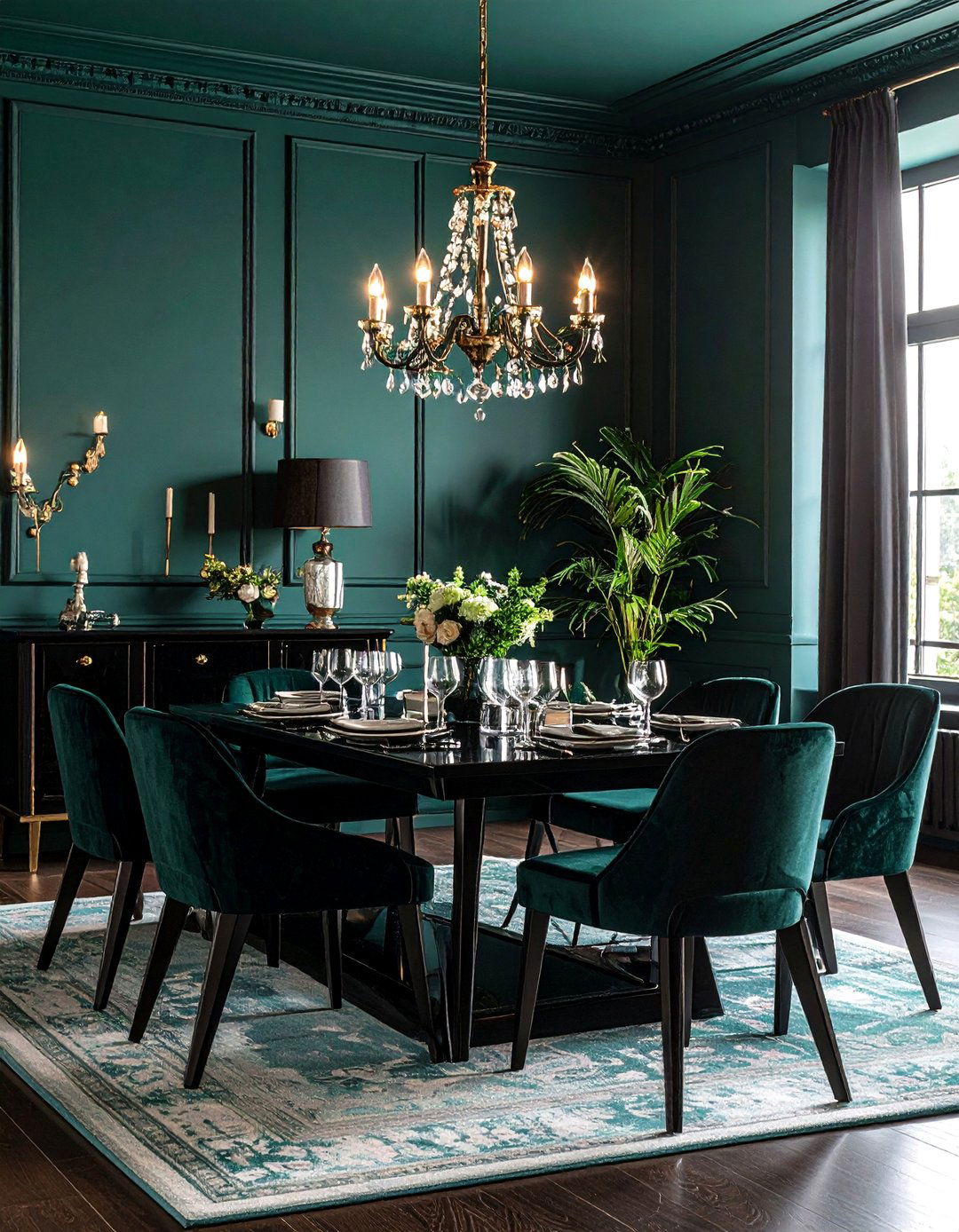
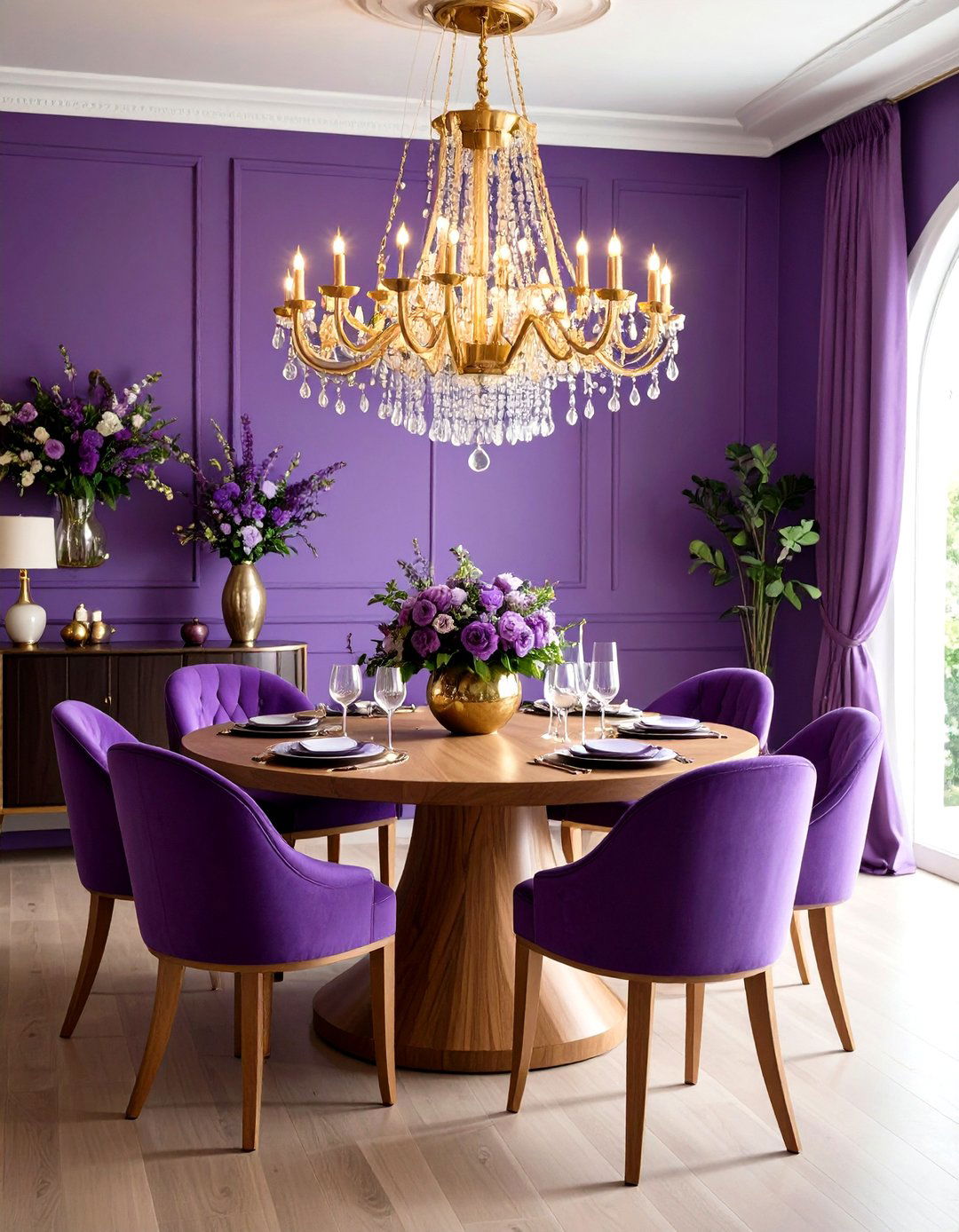
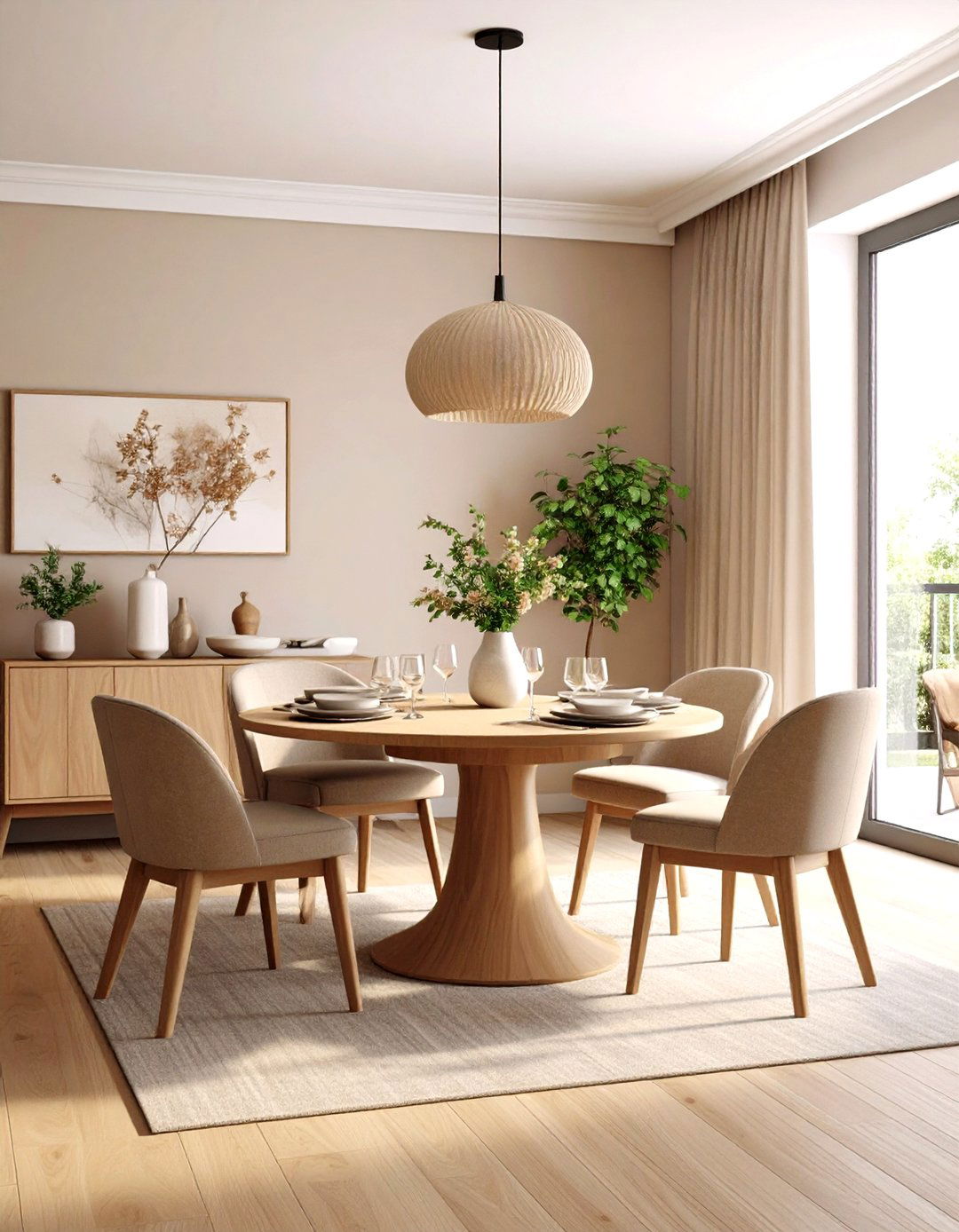
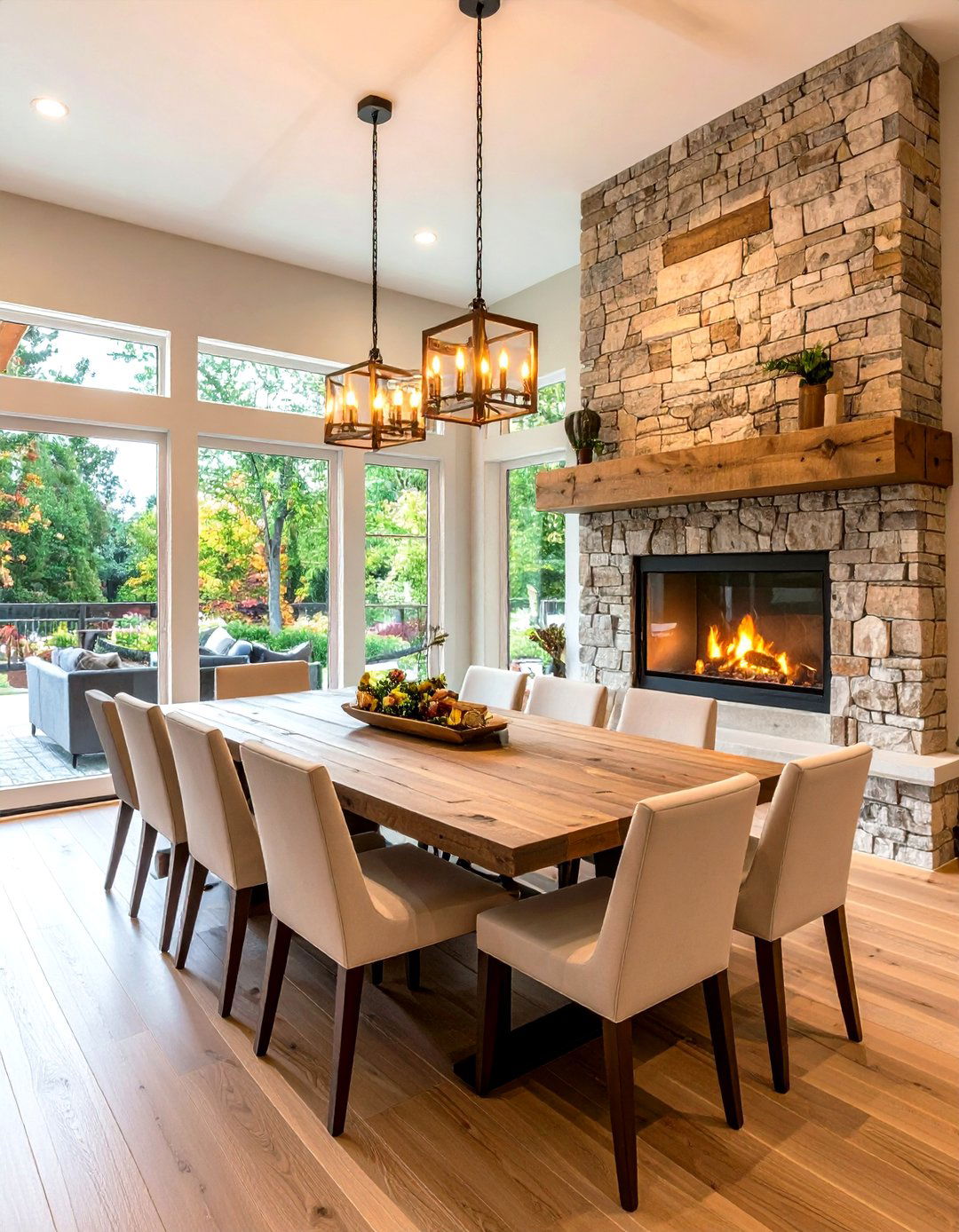
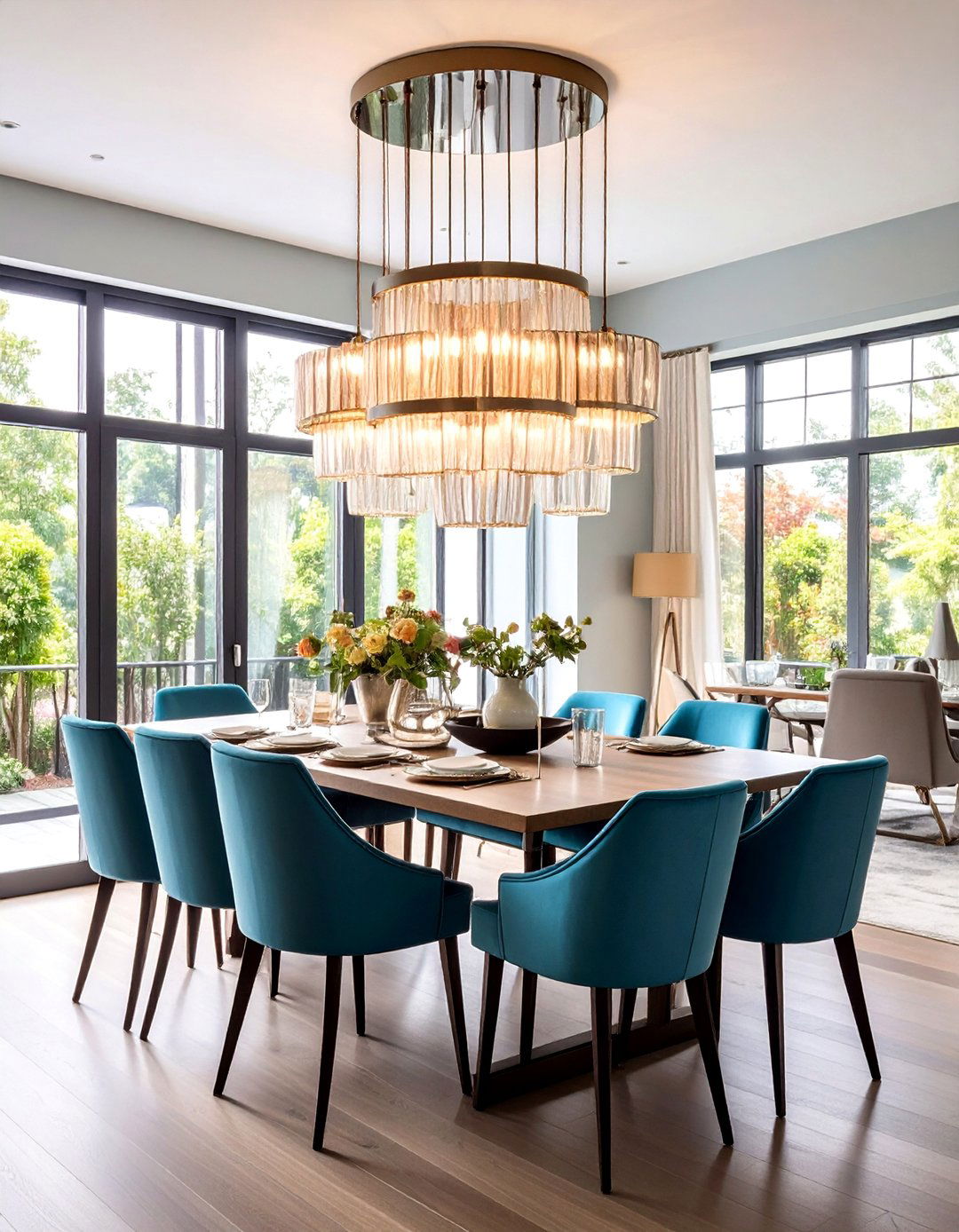
Leave a Reply